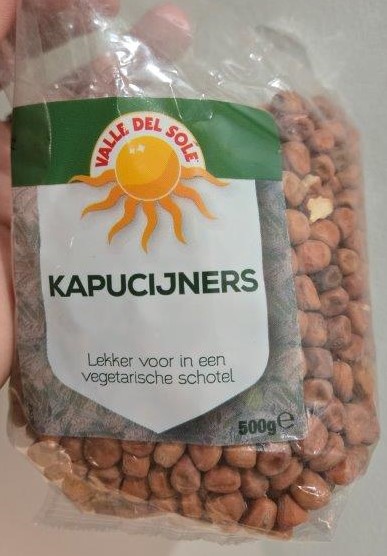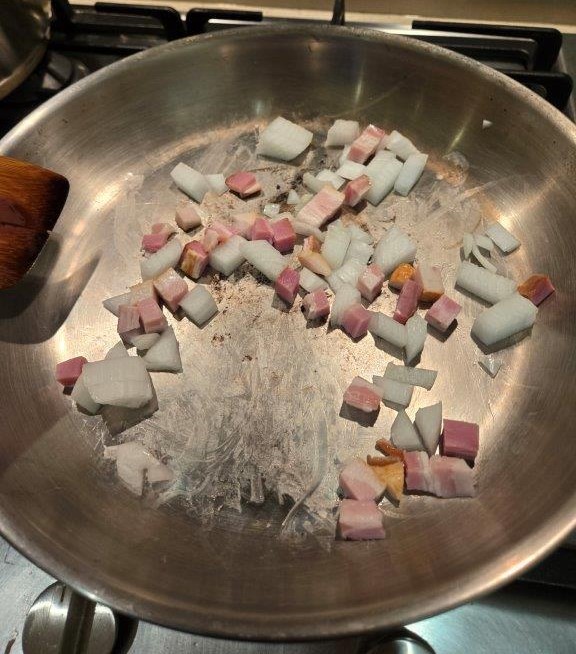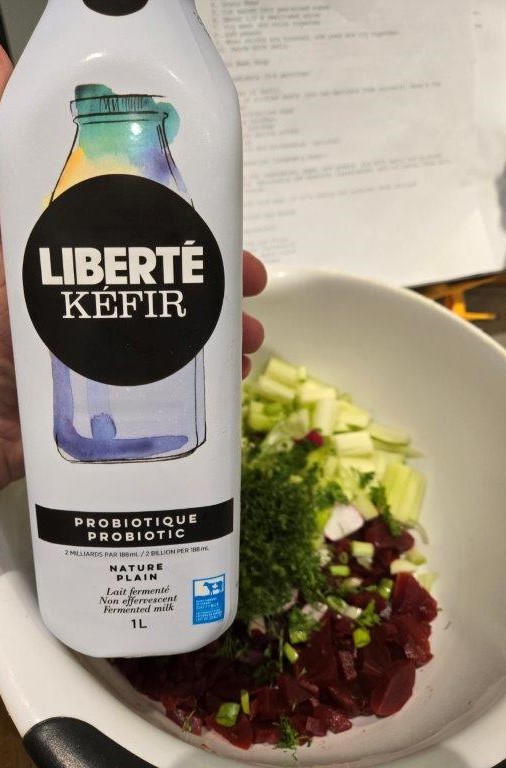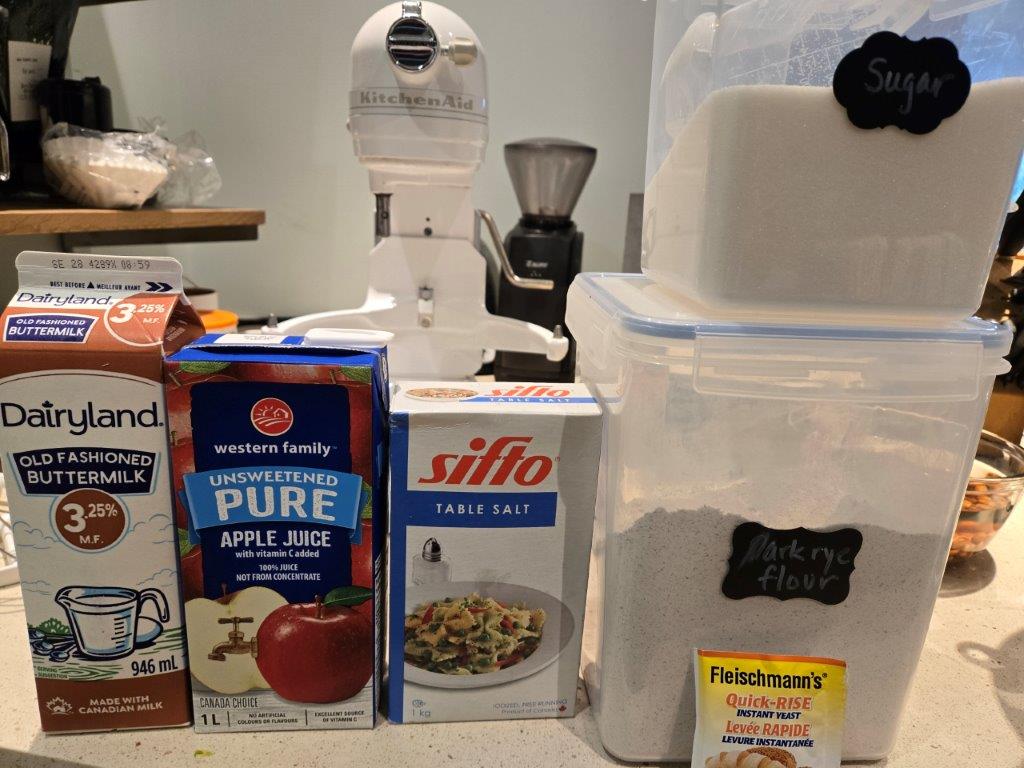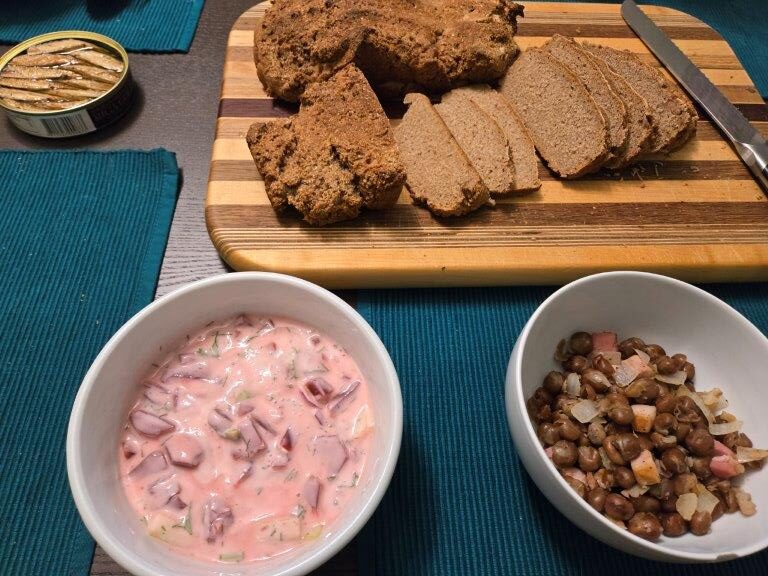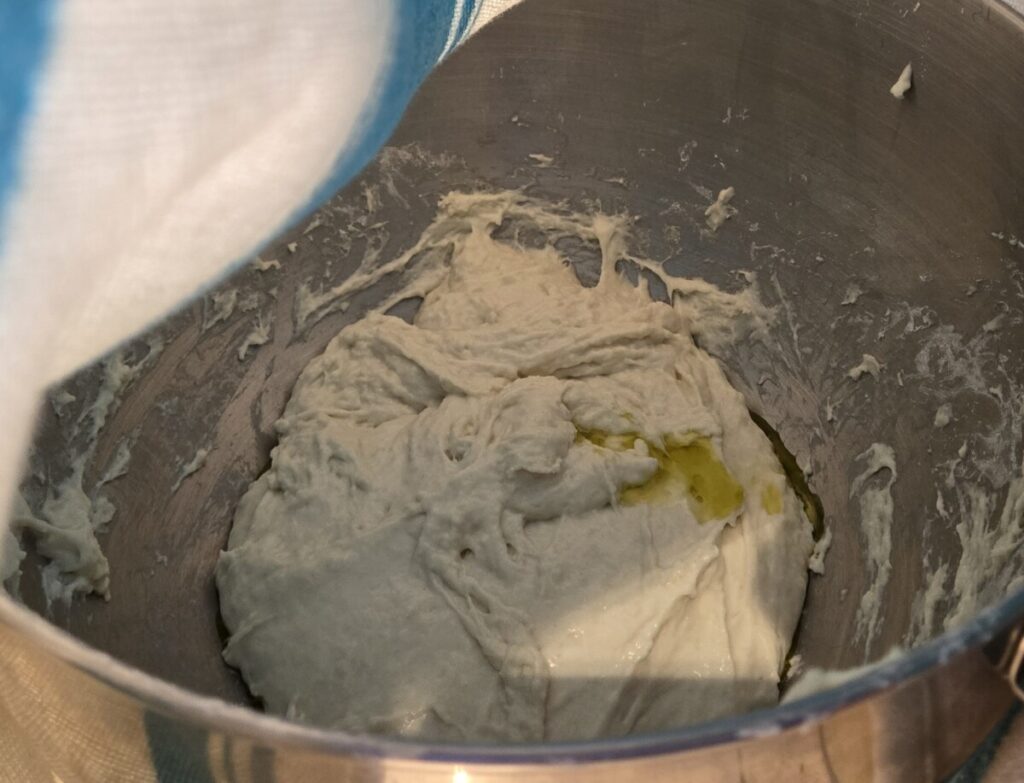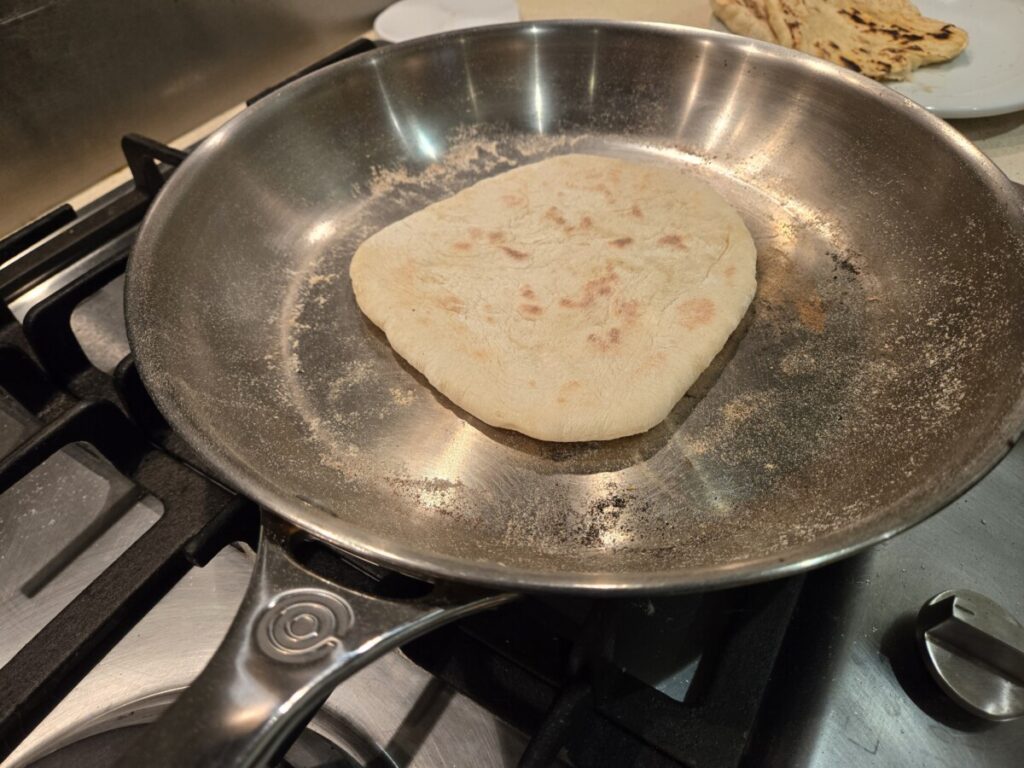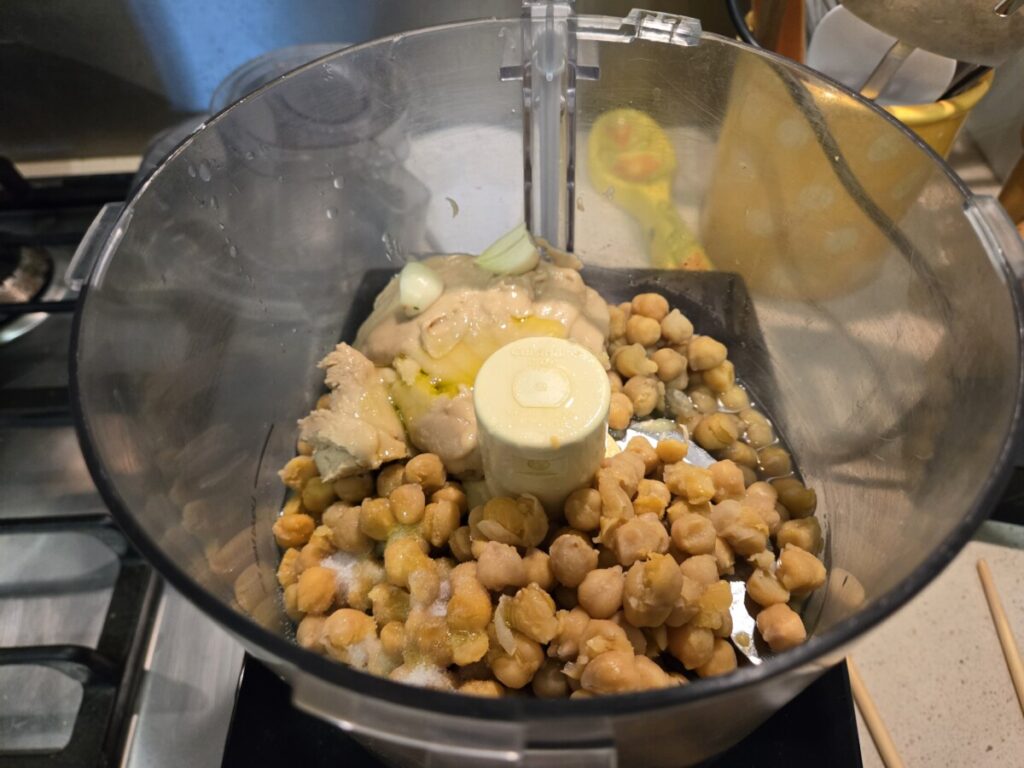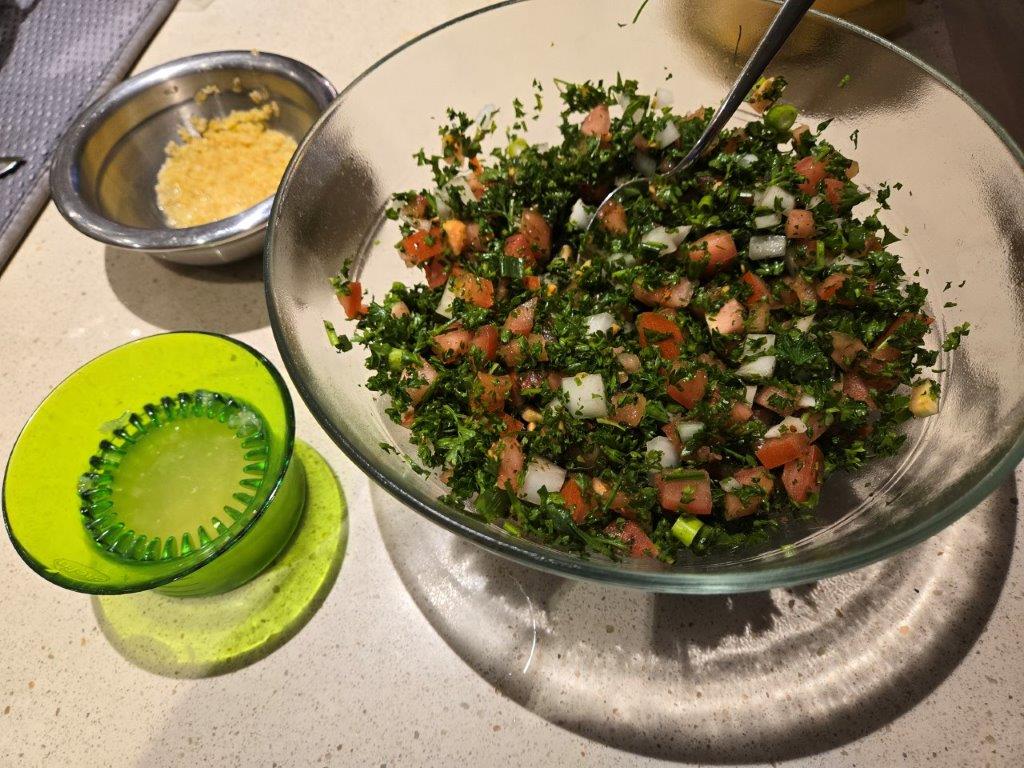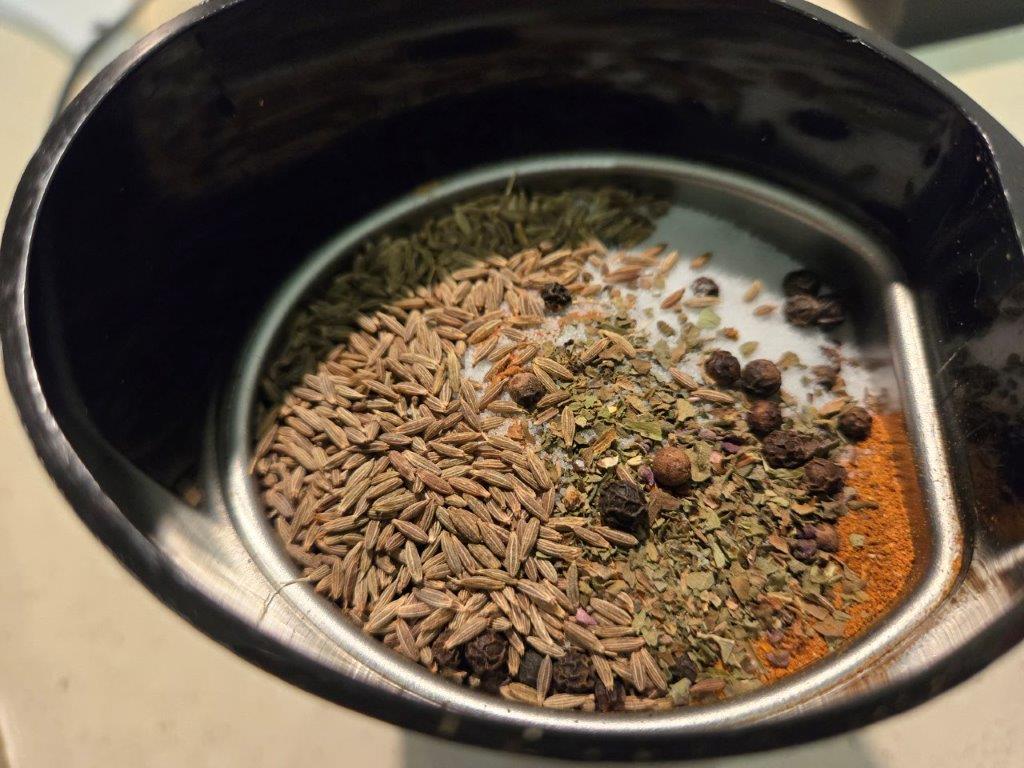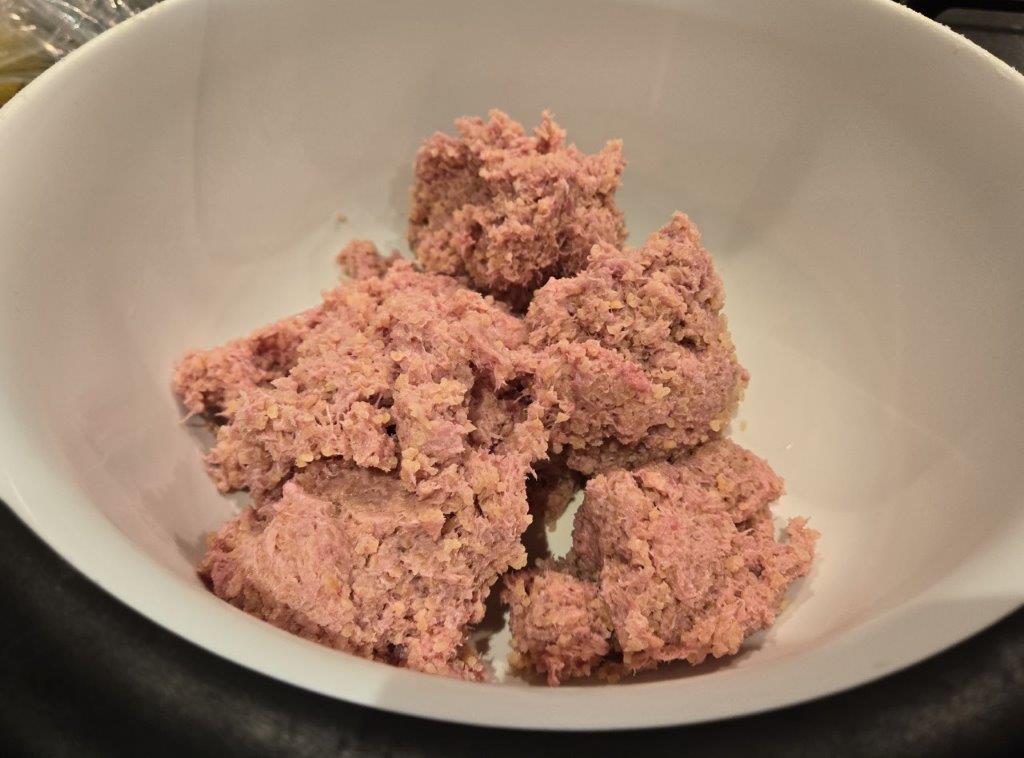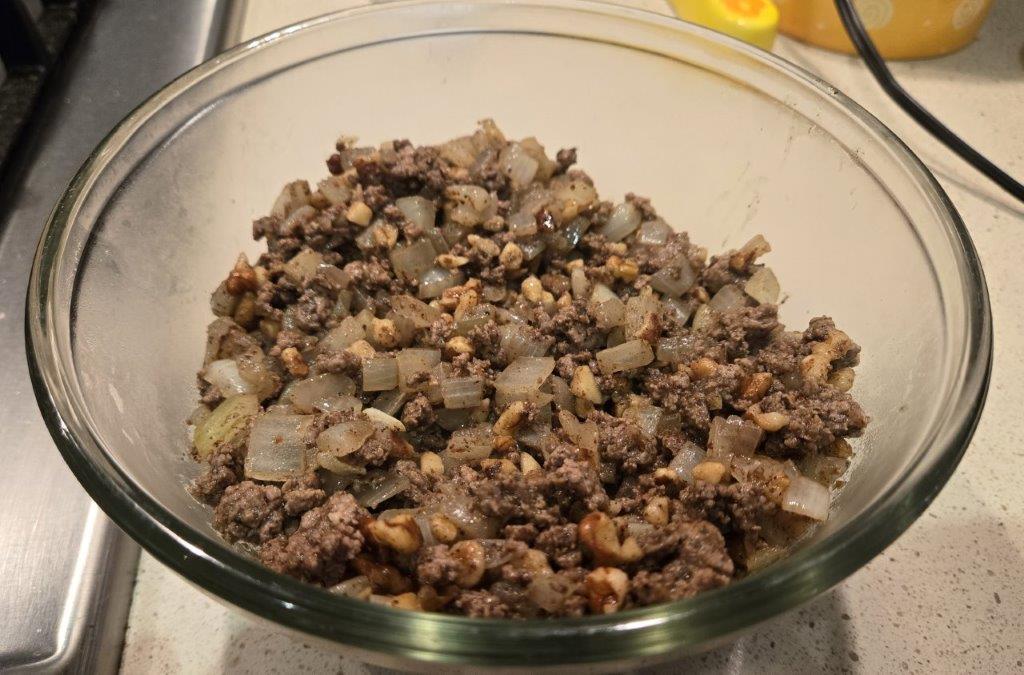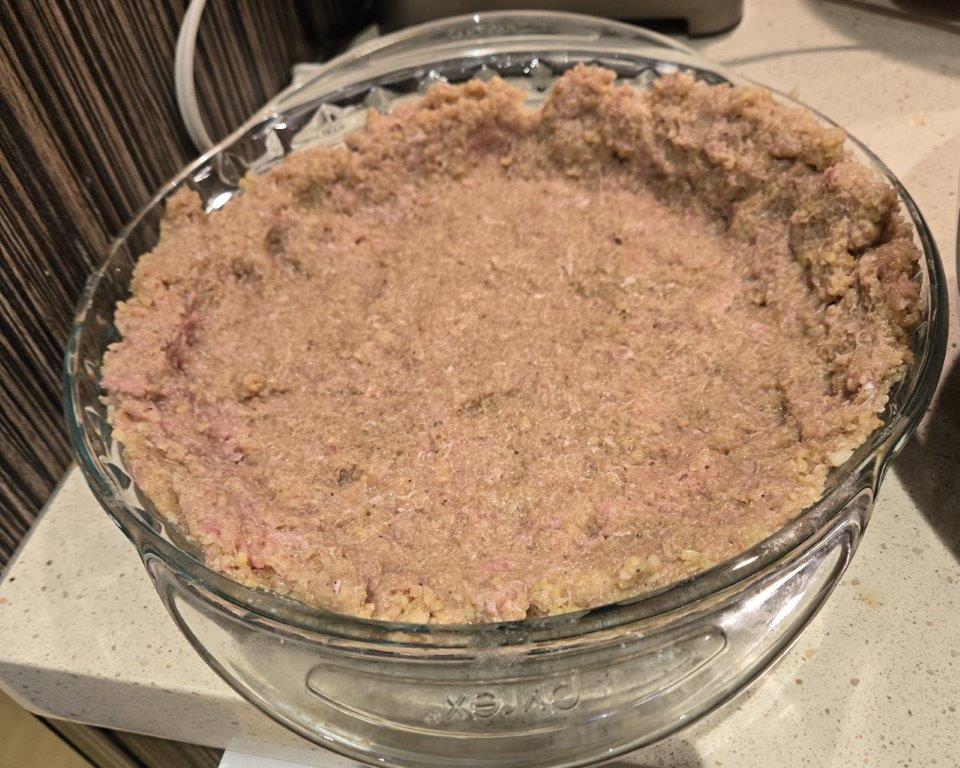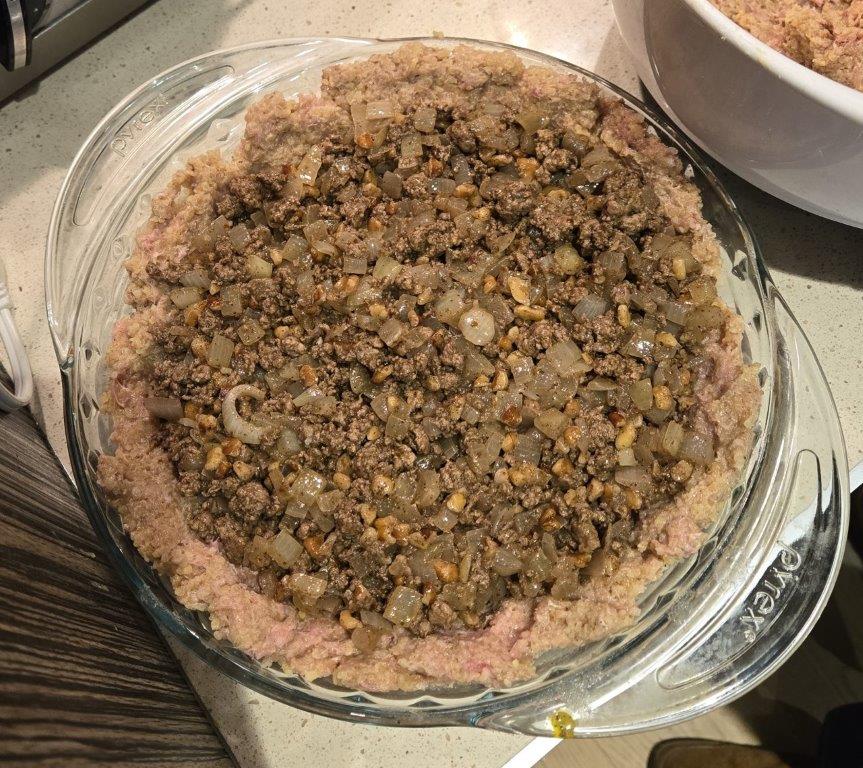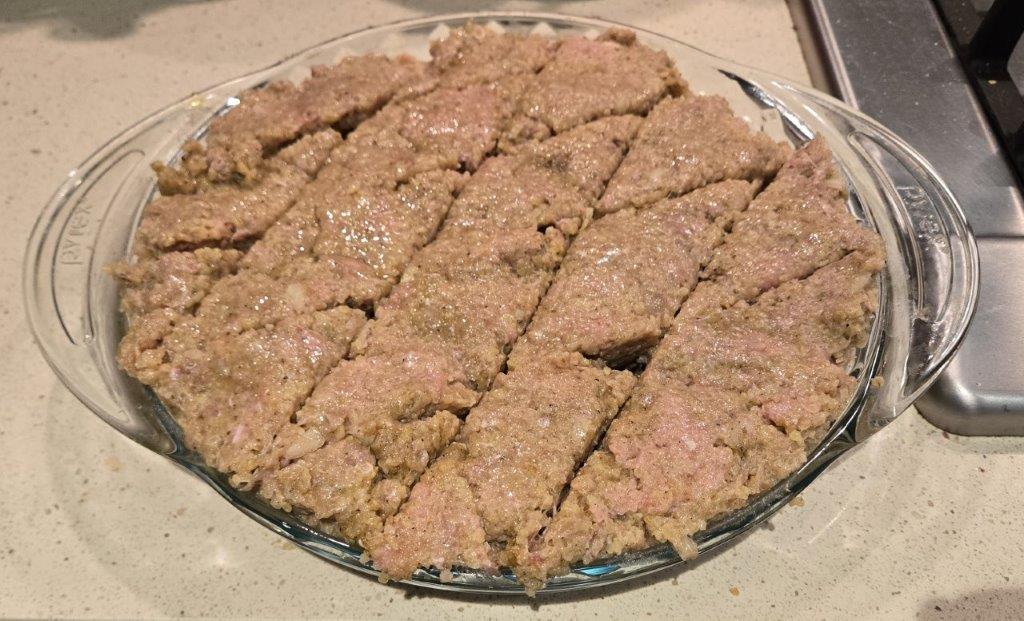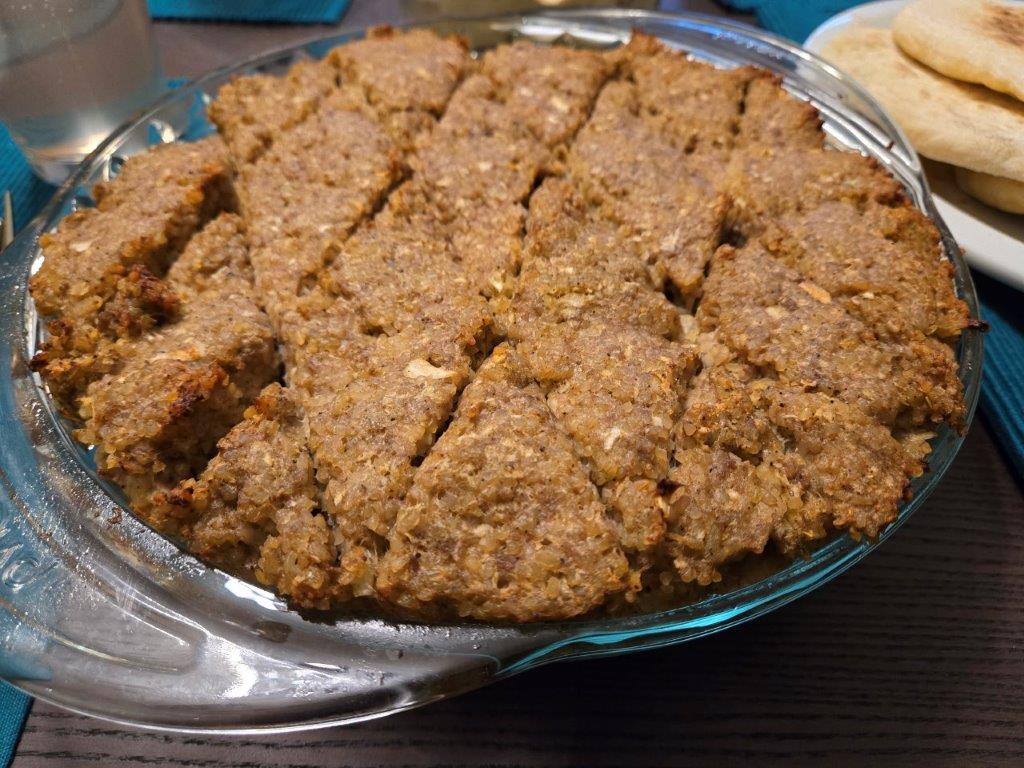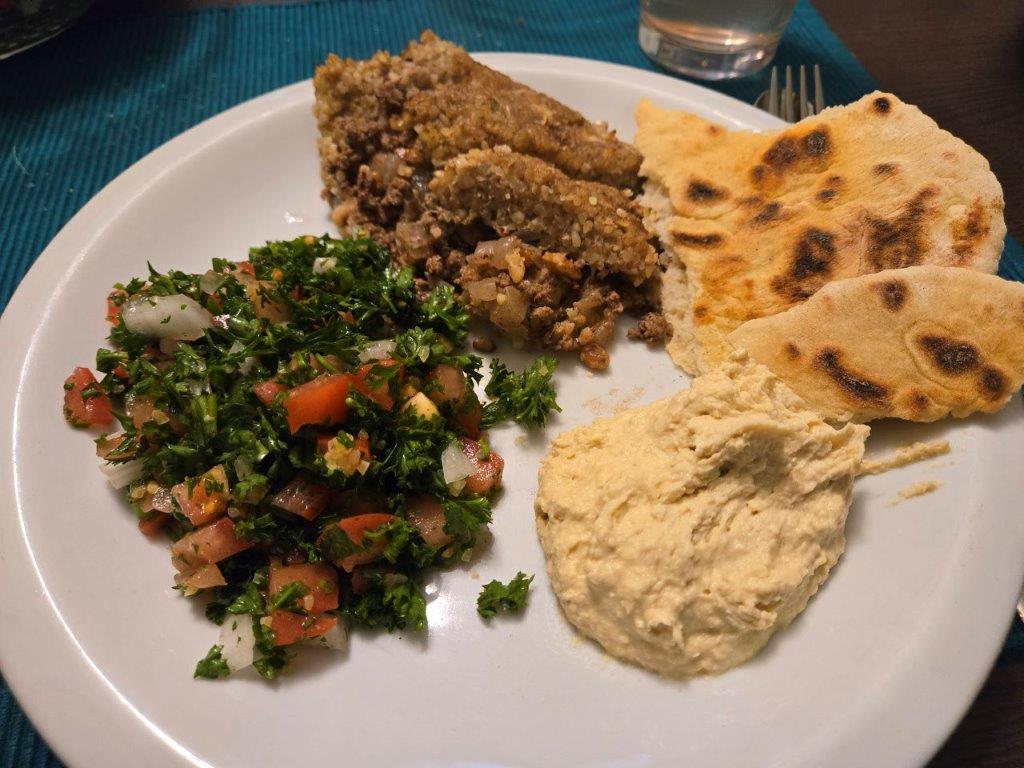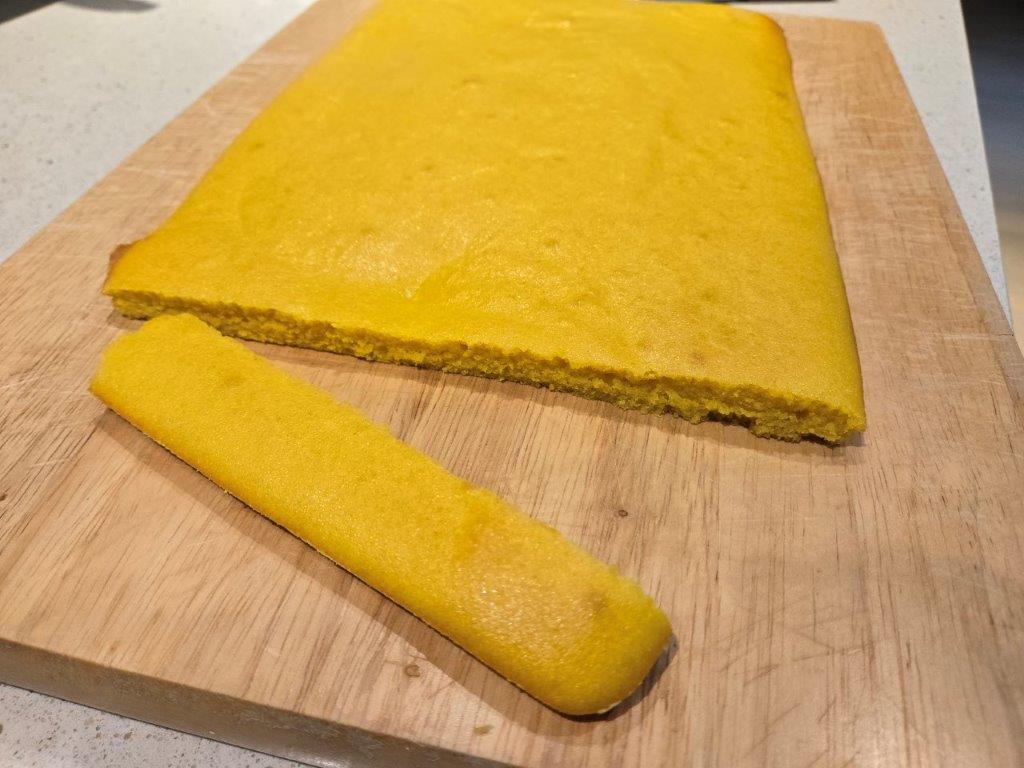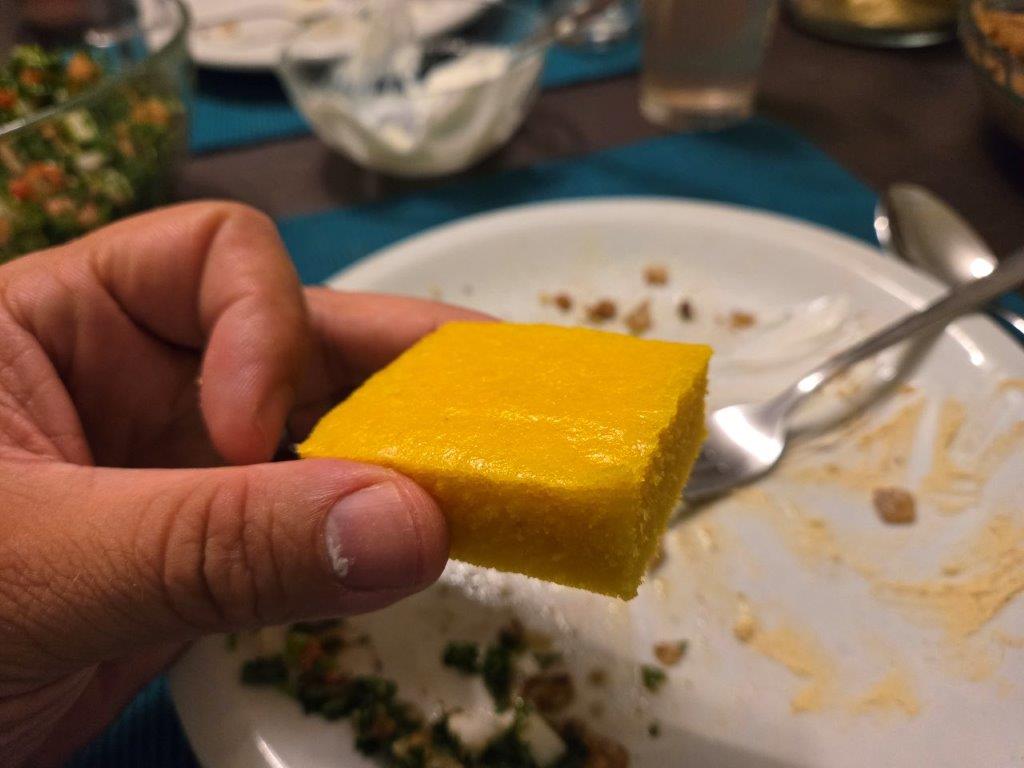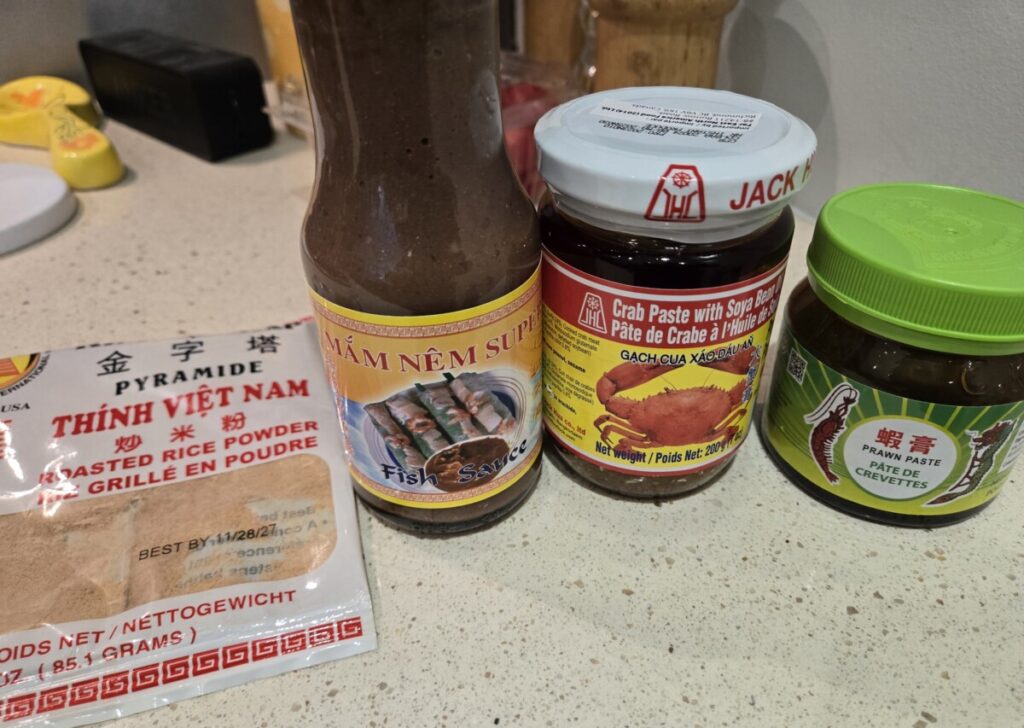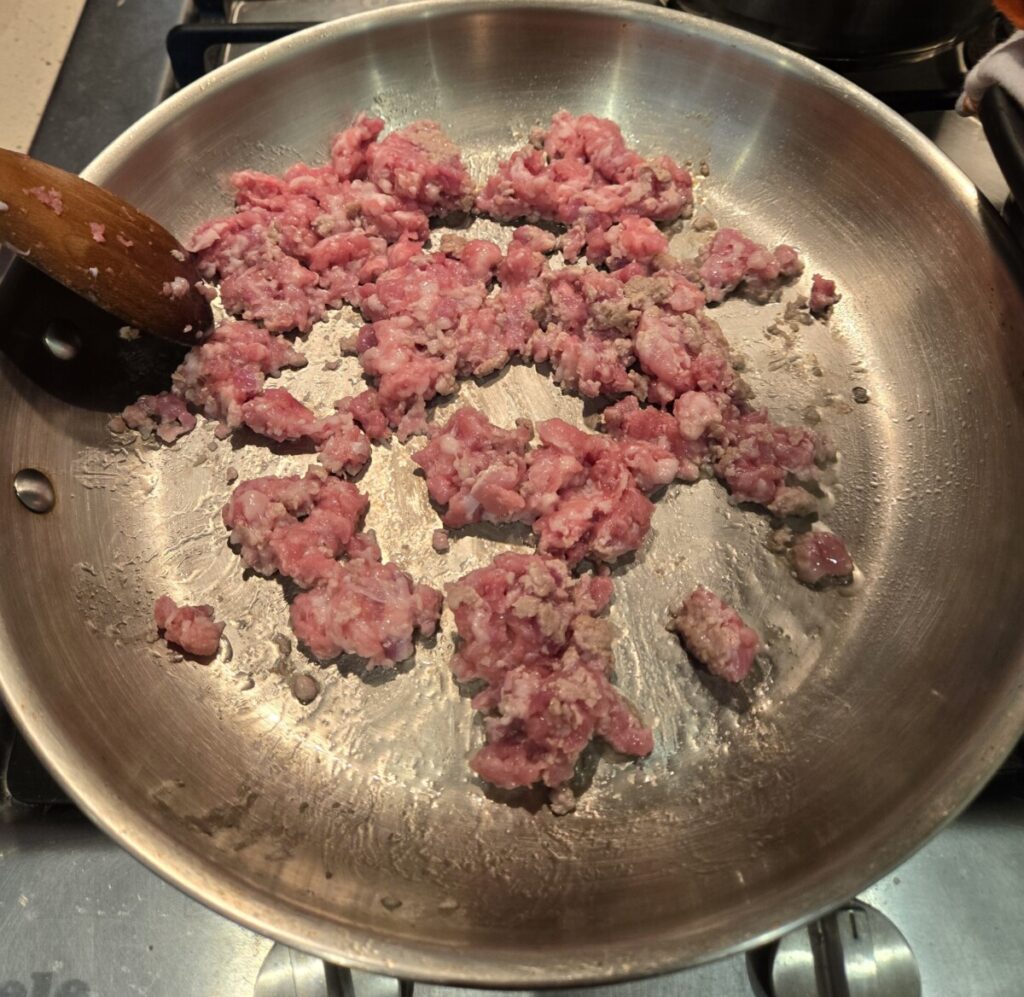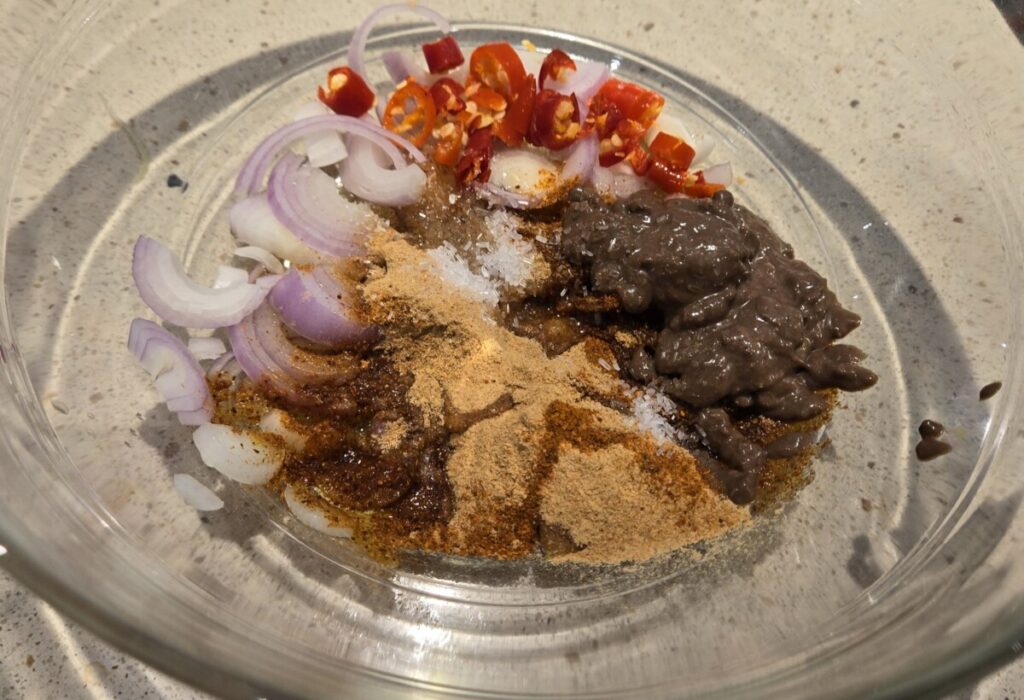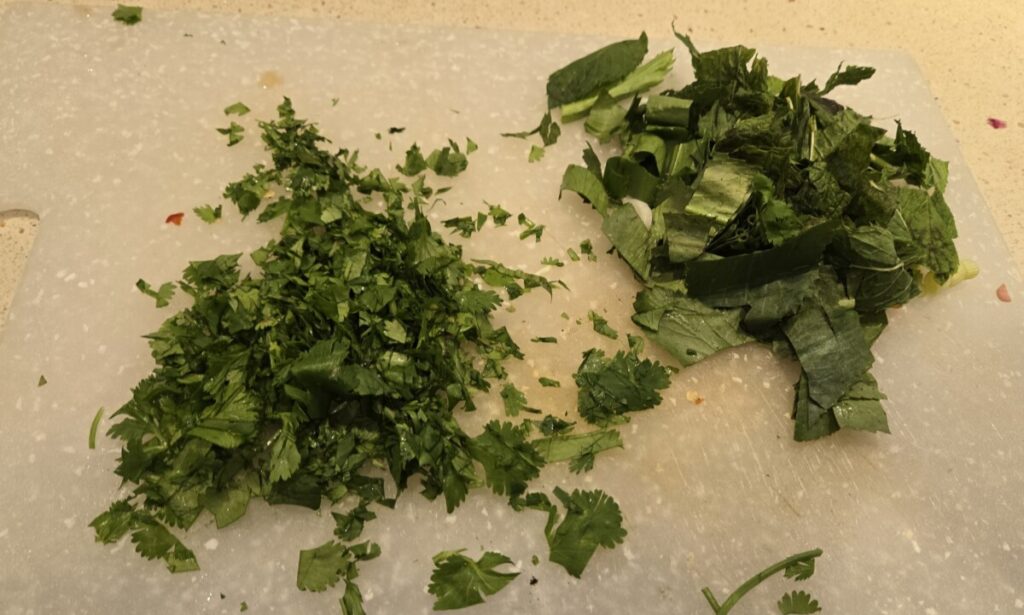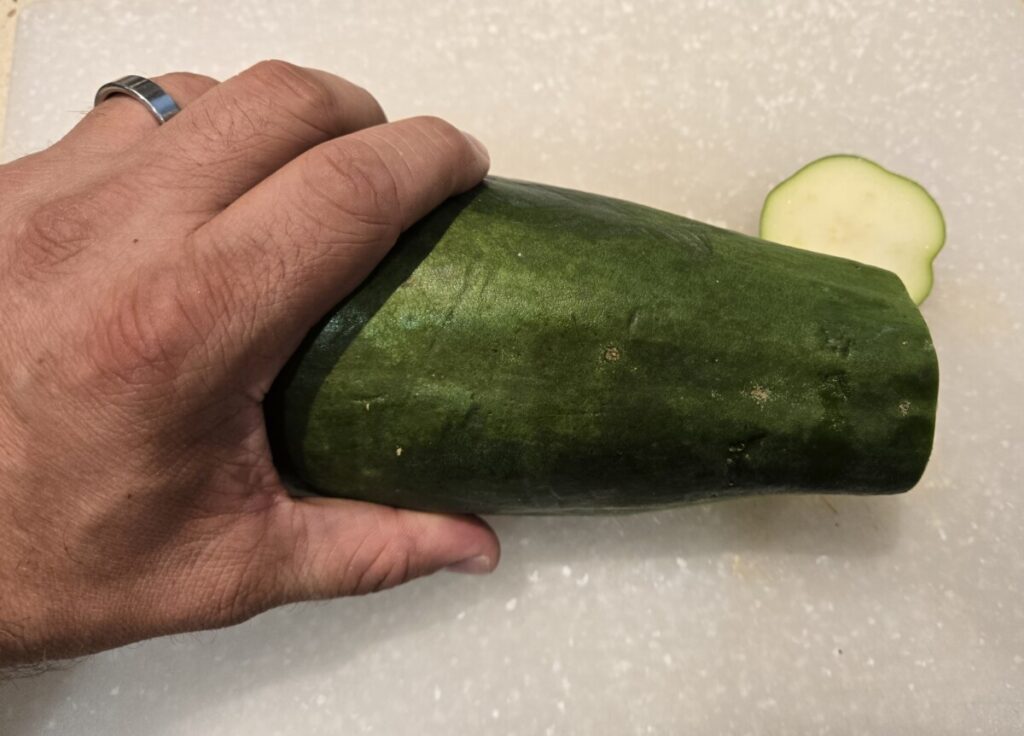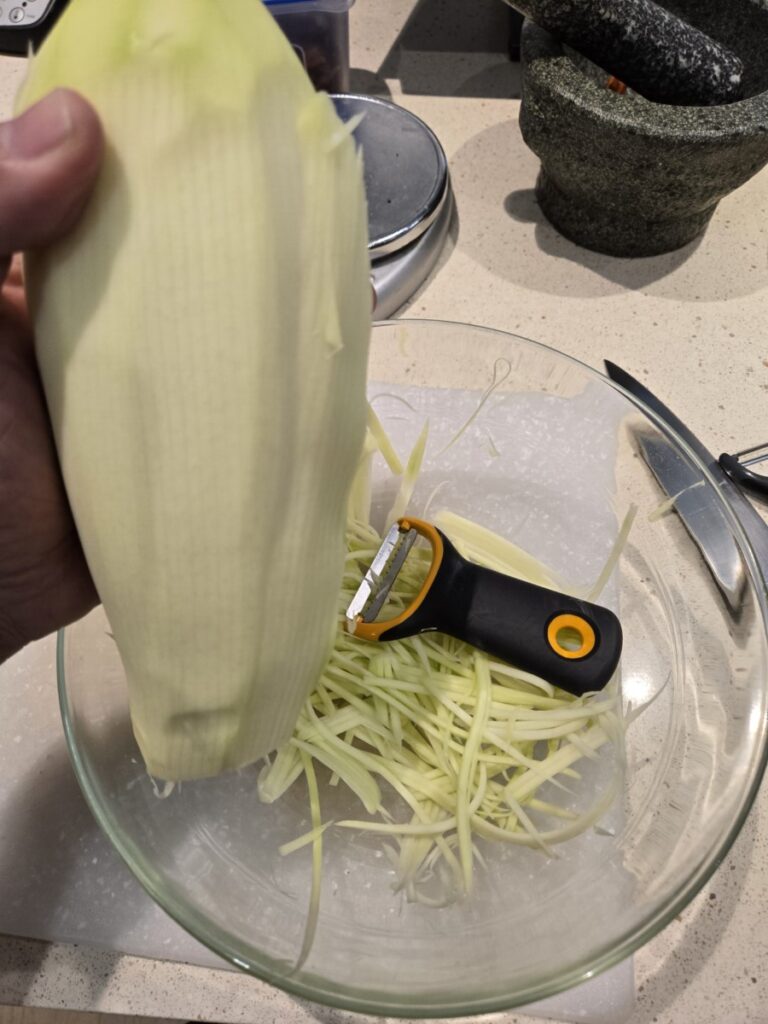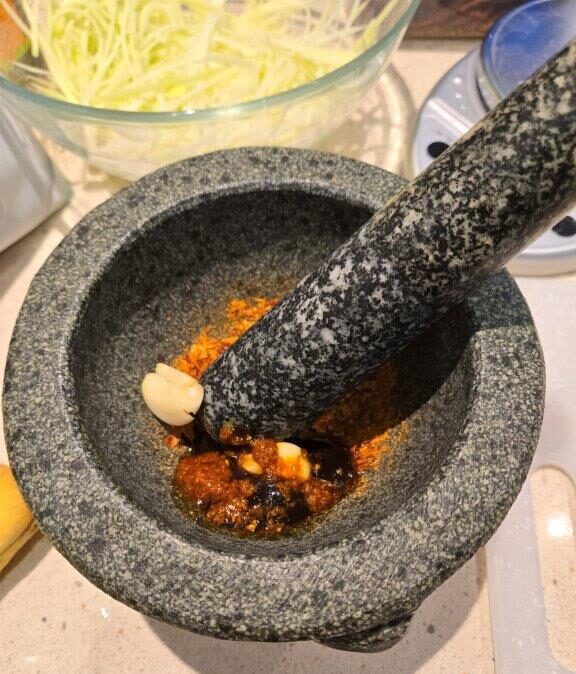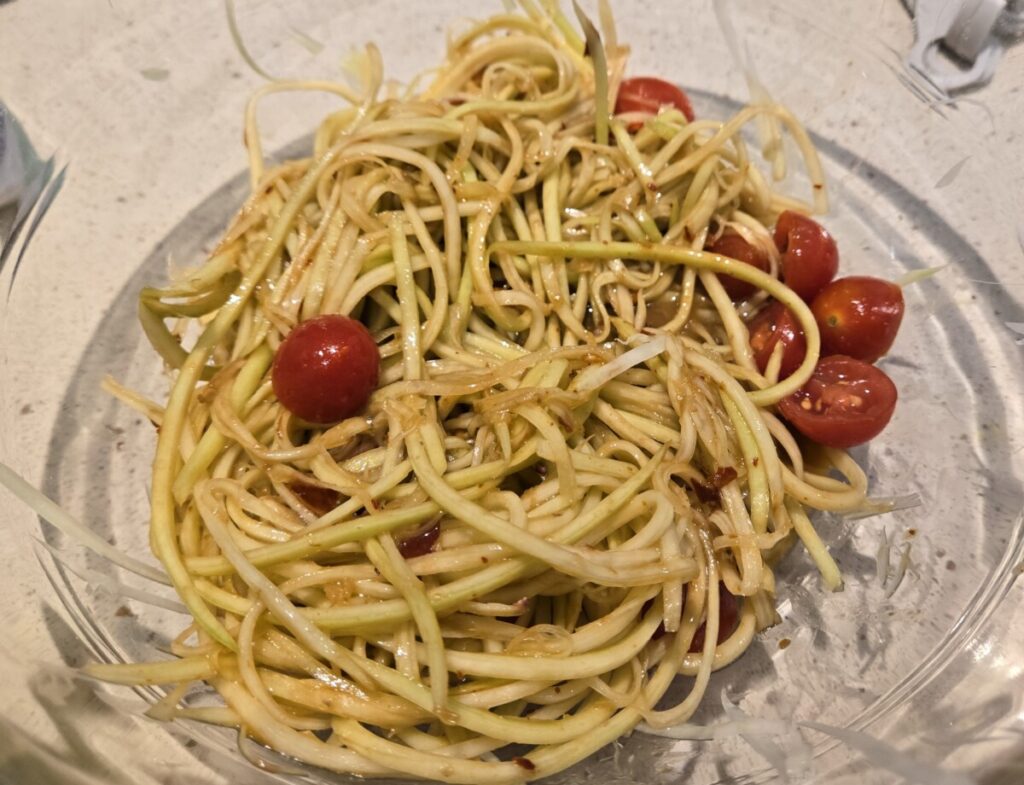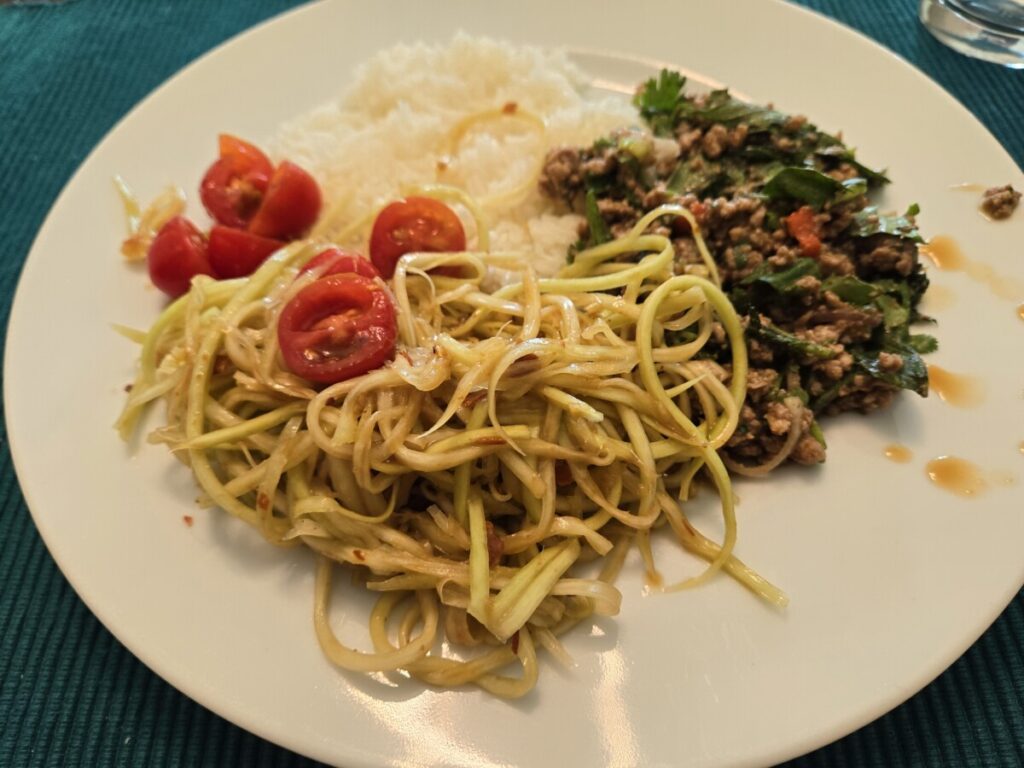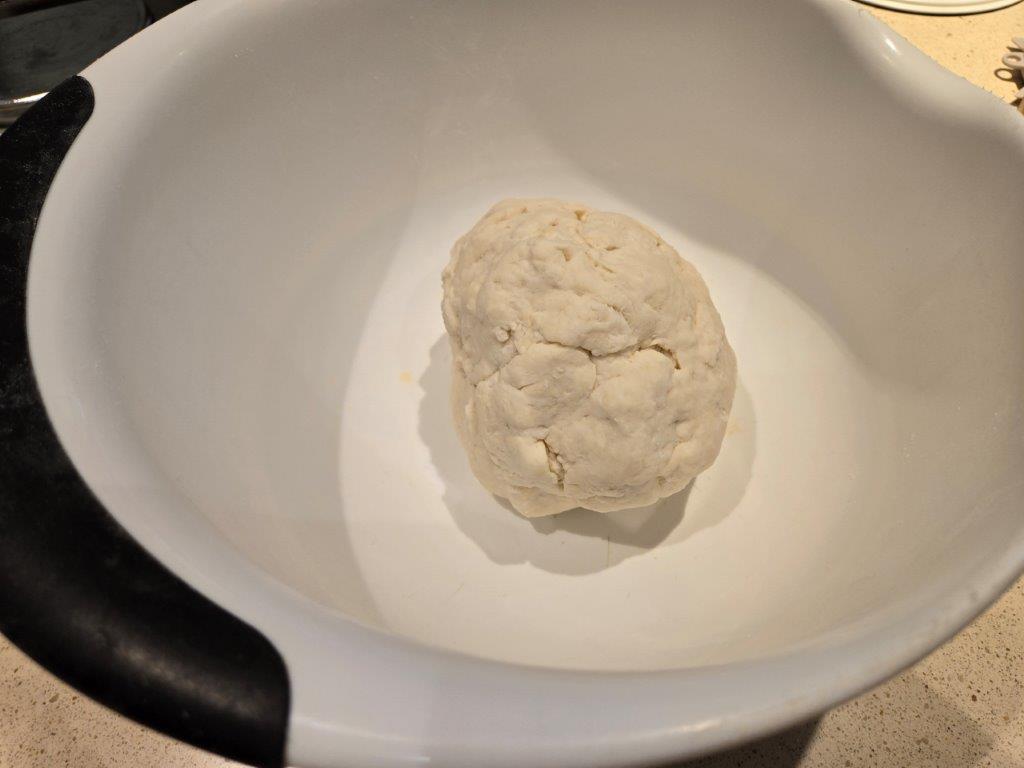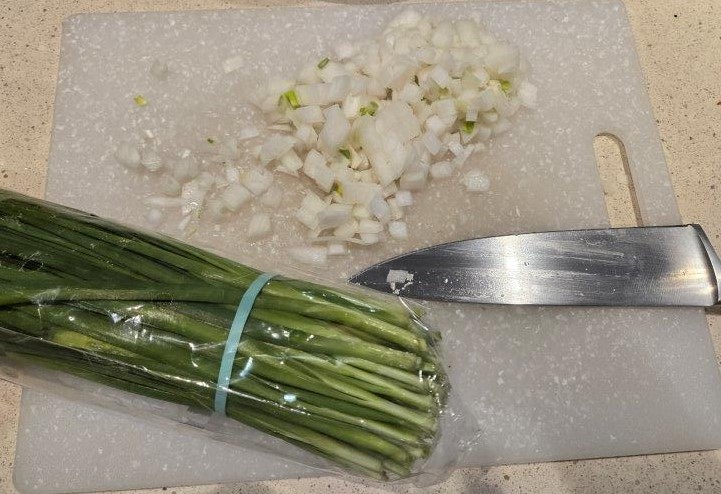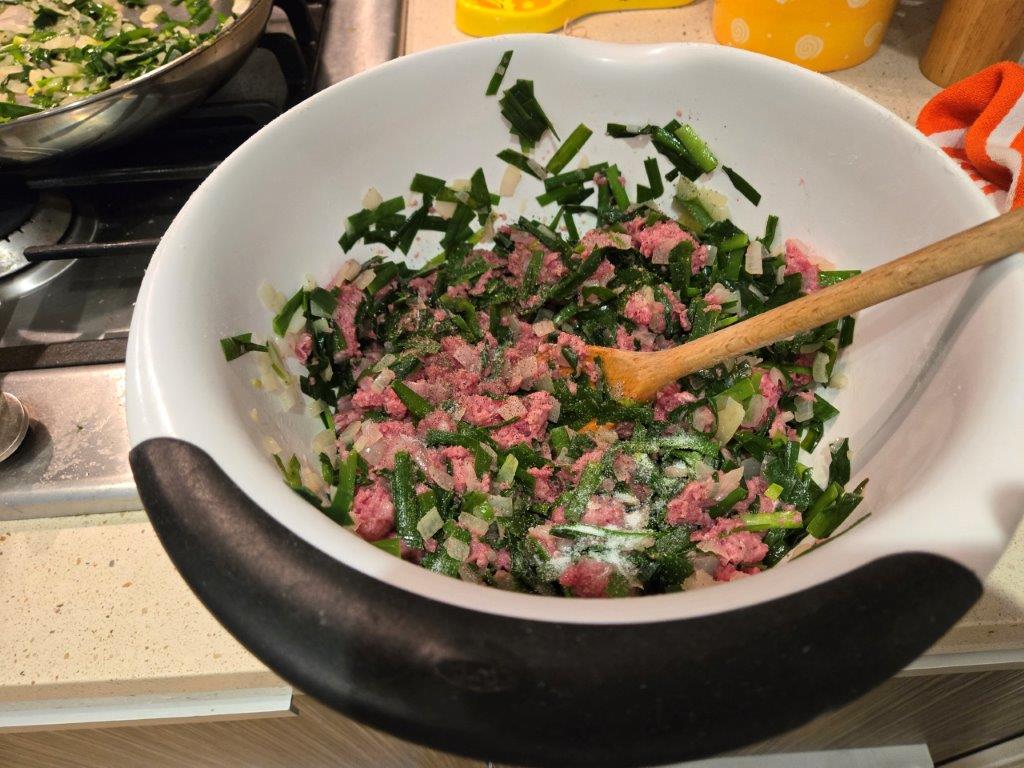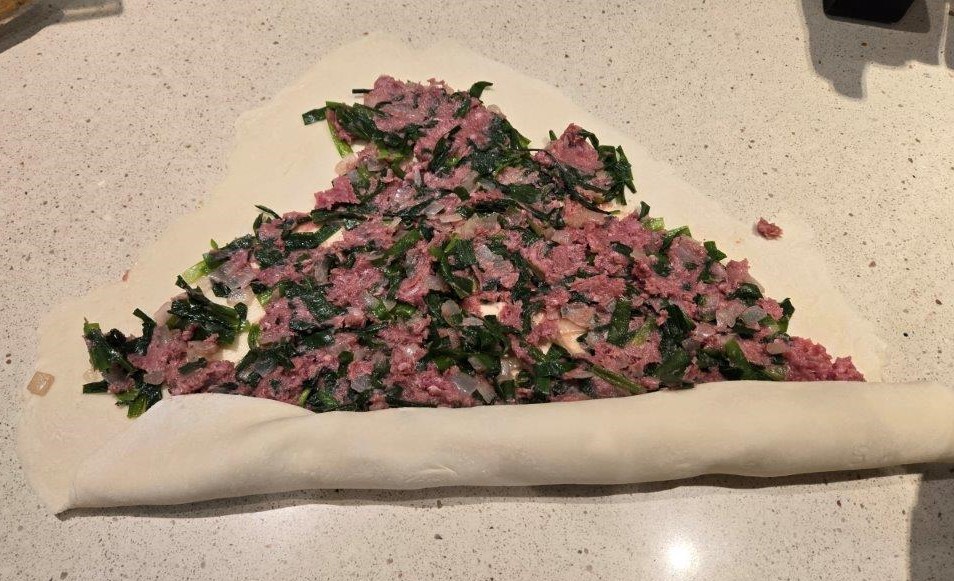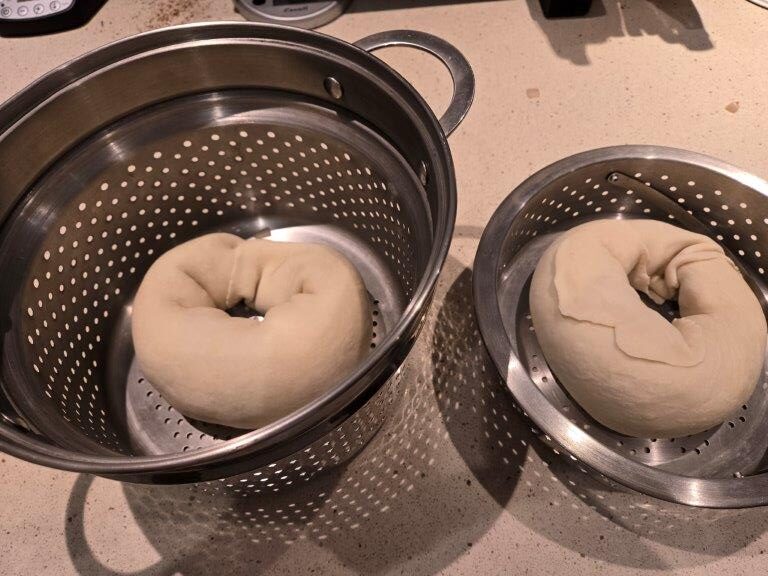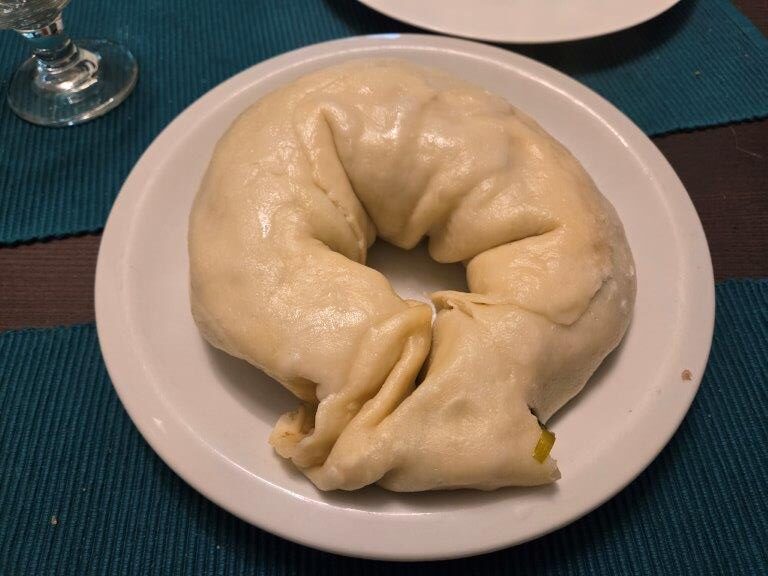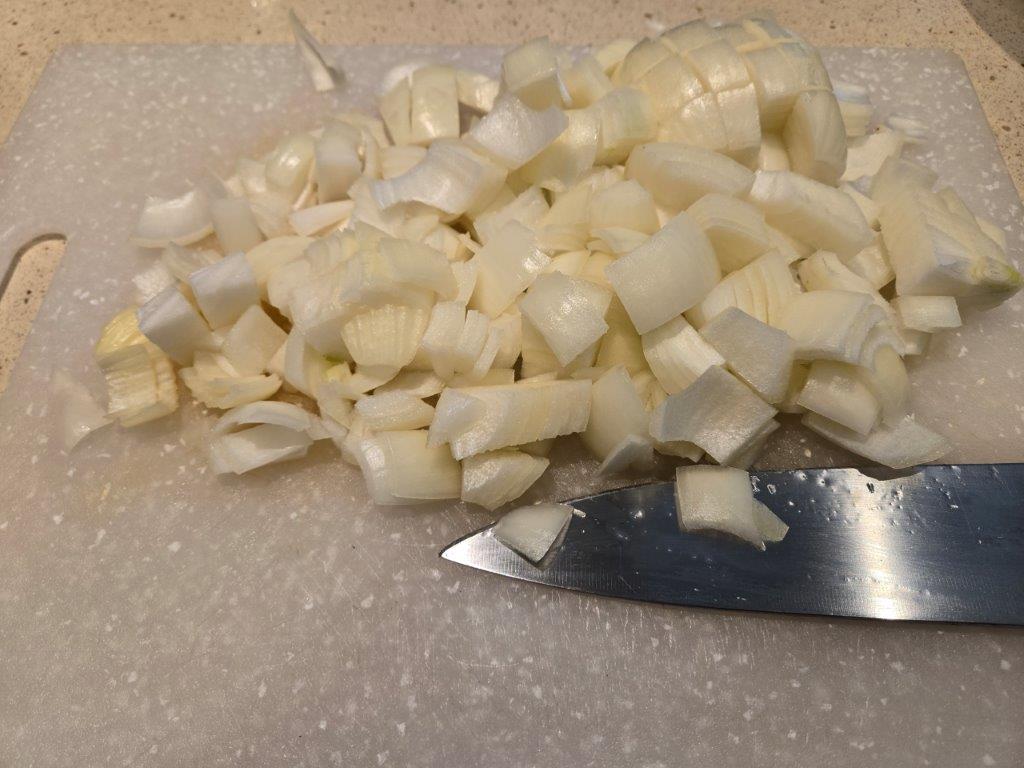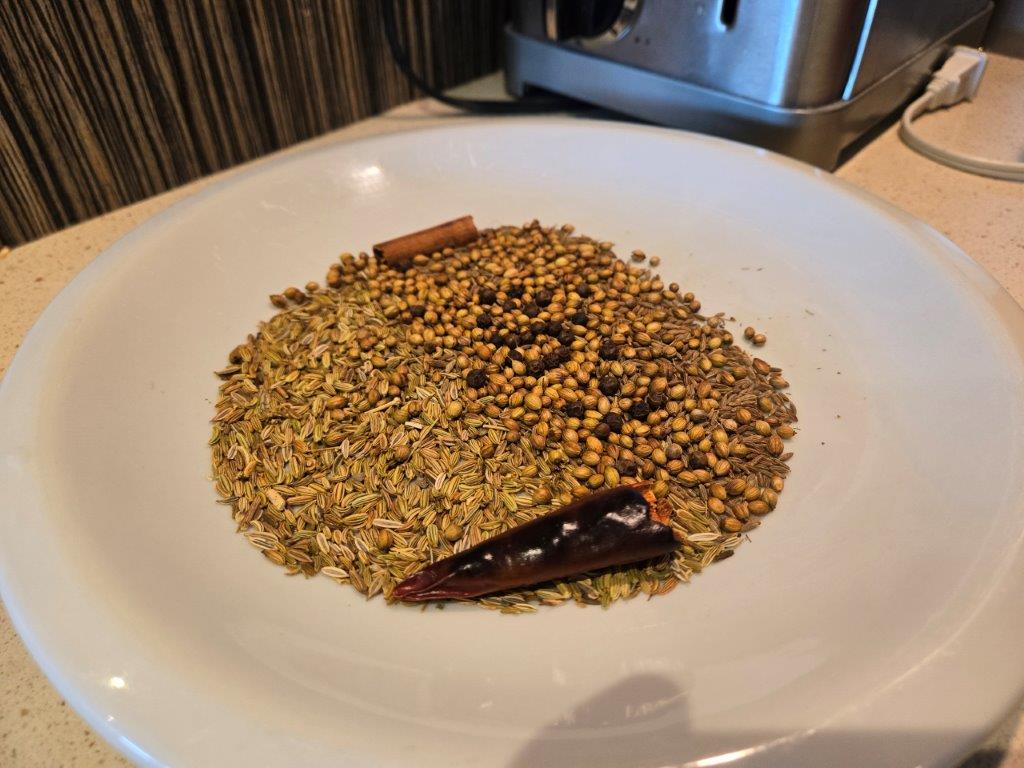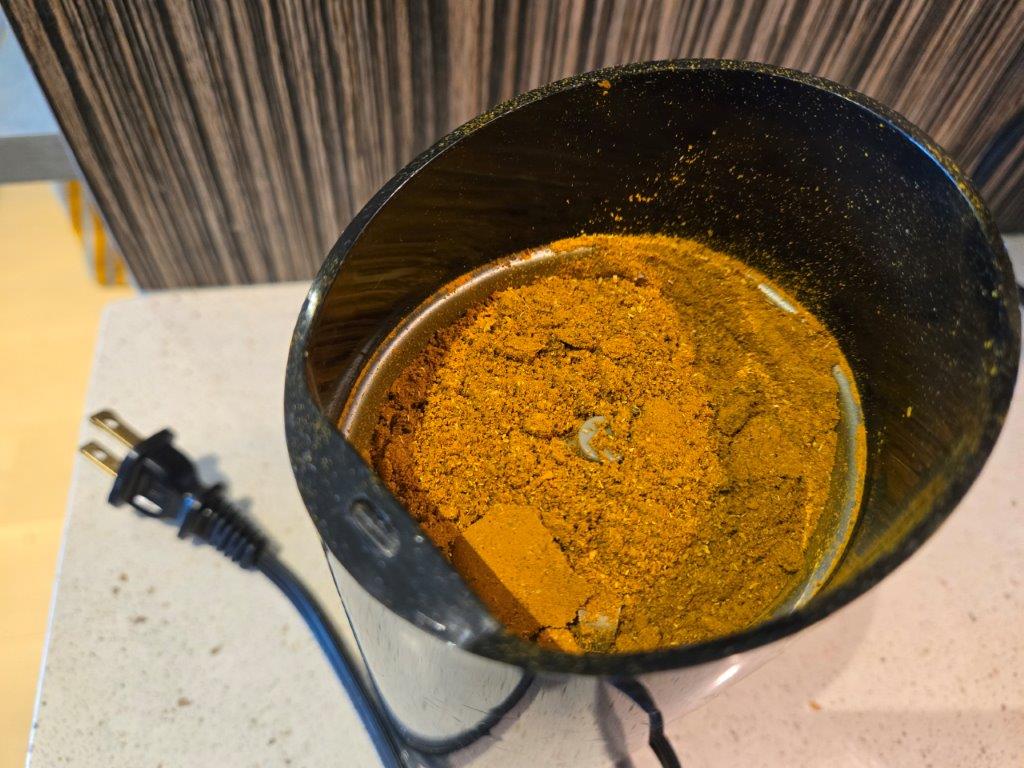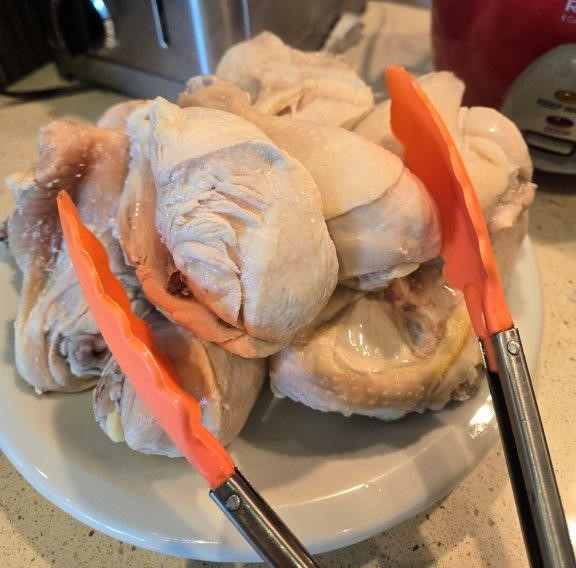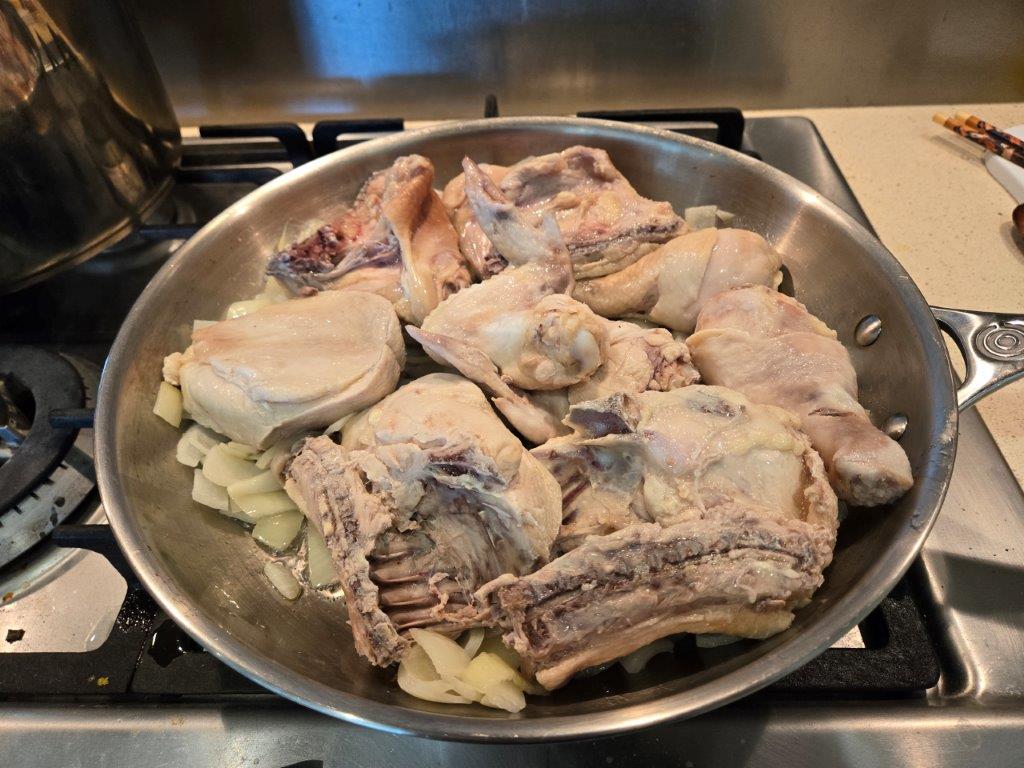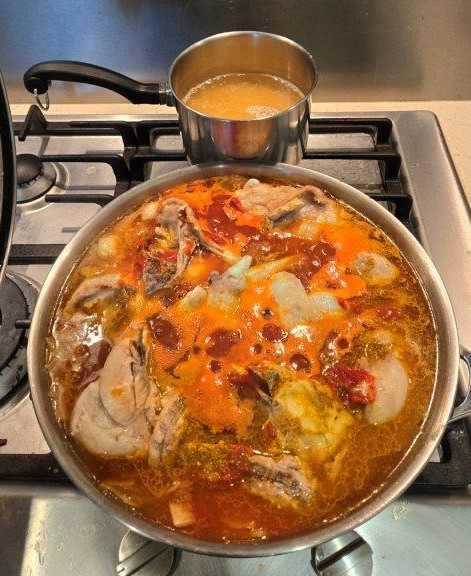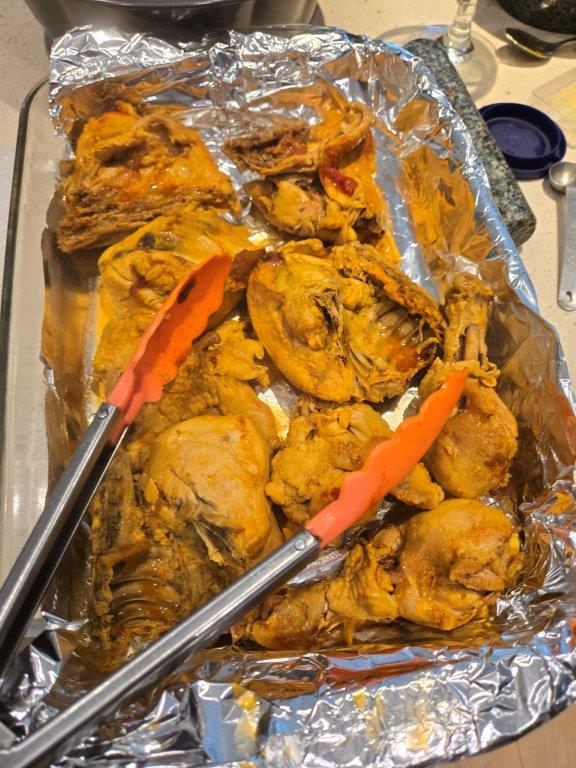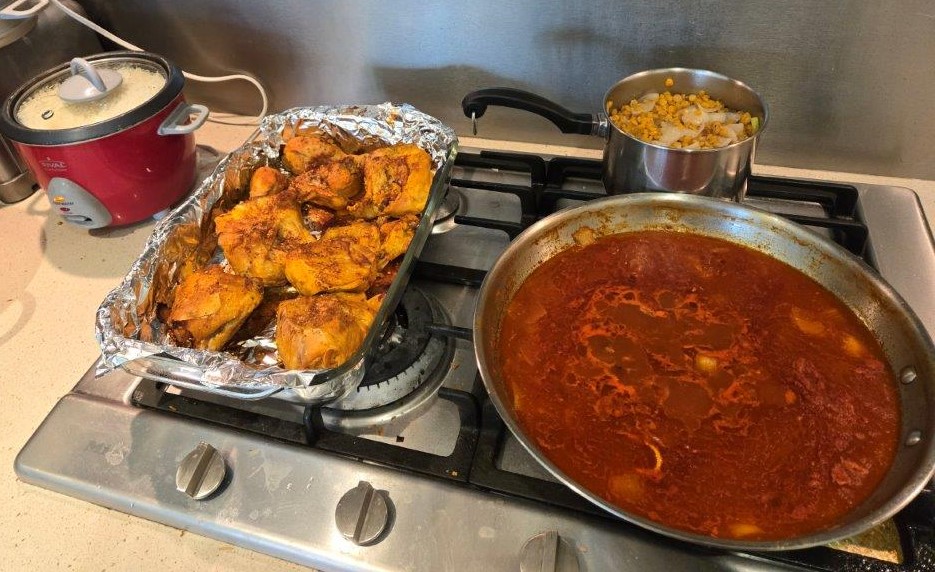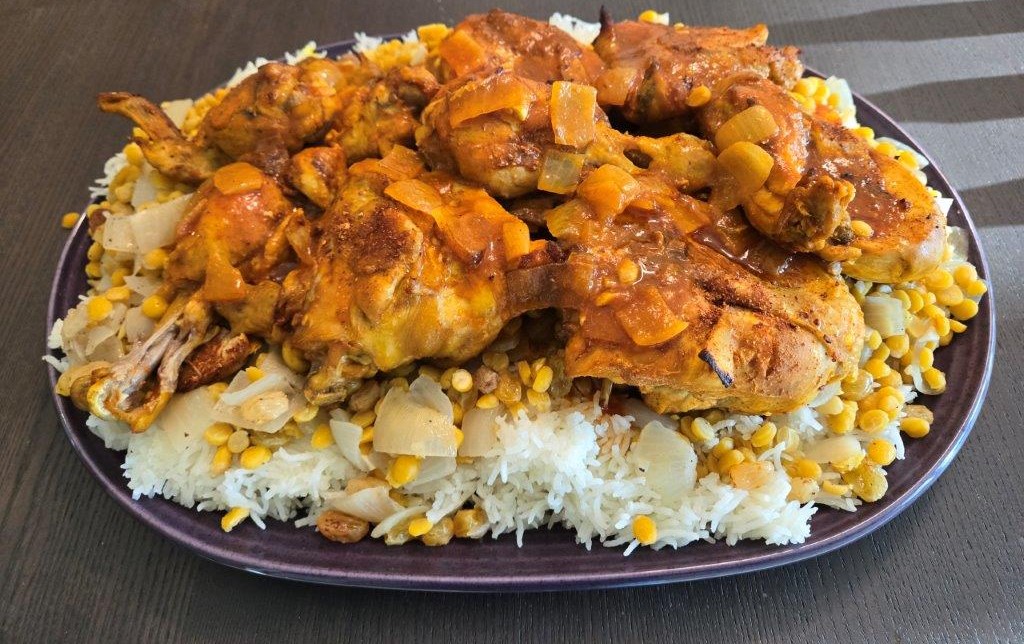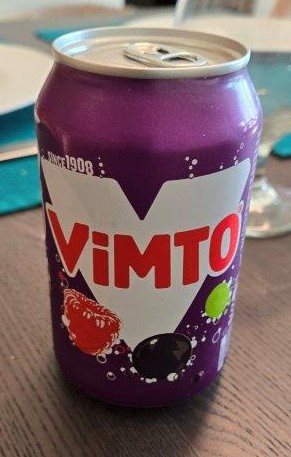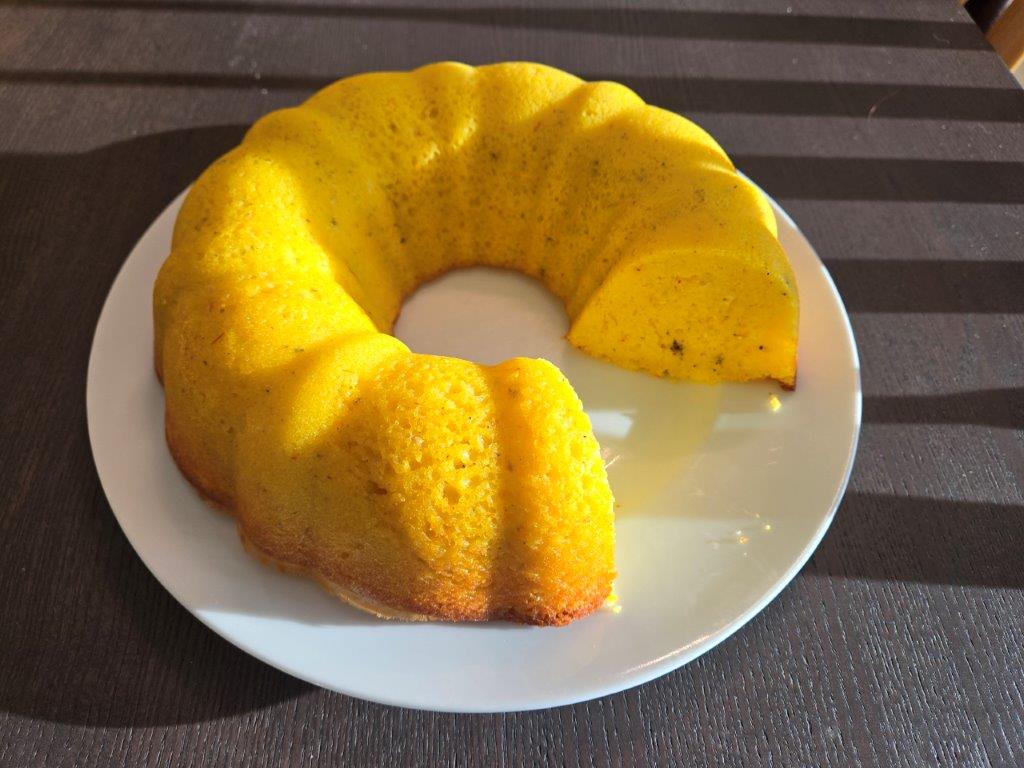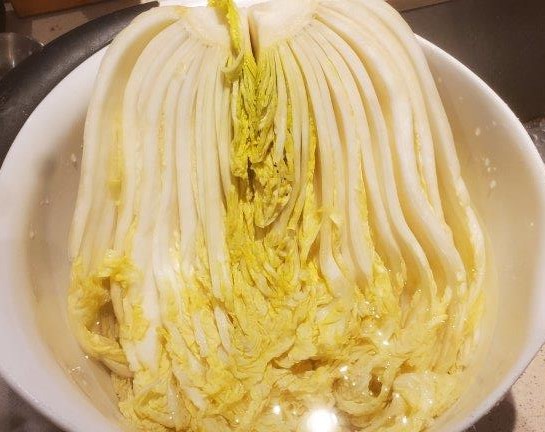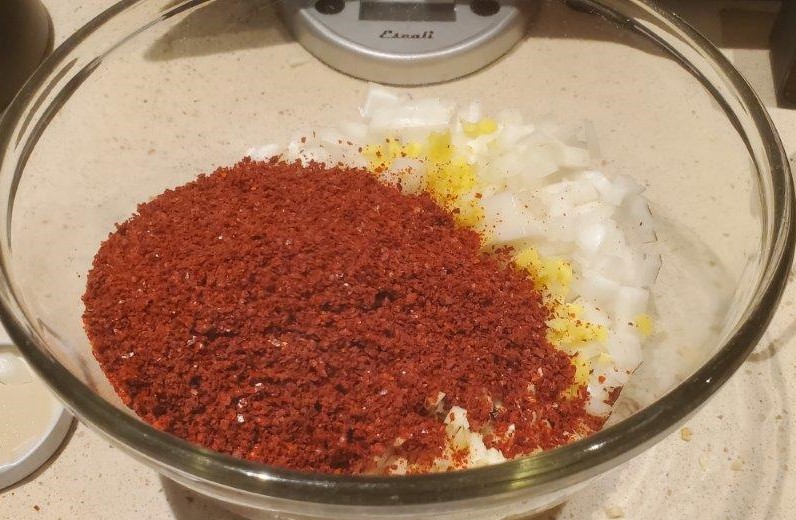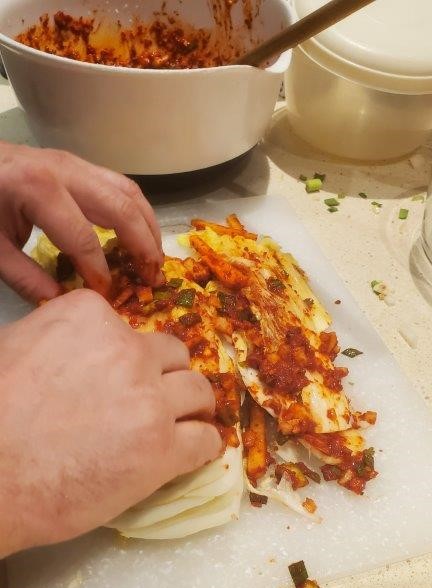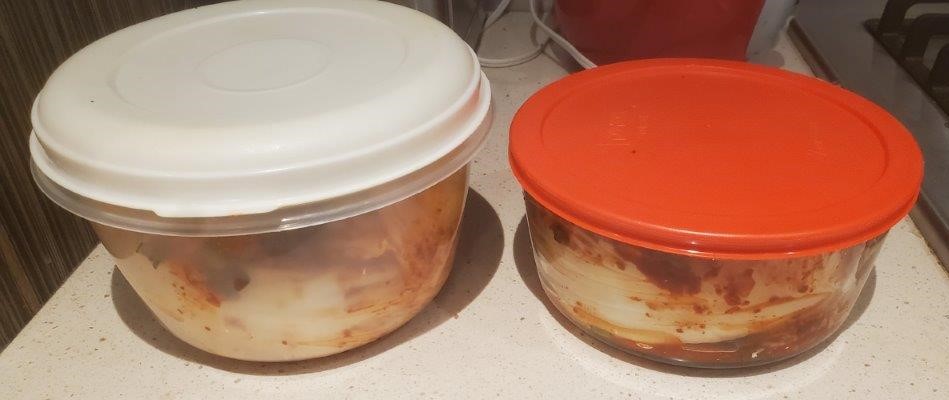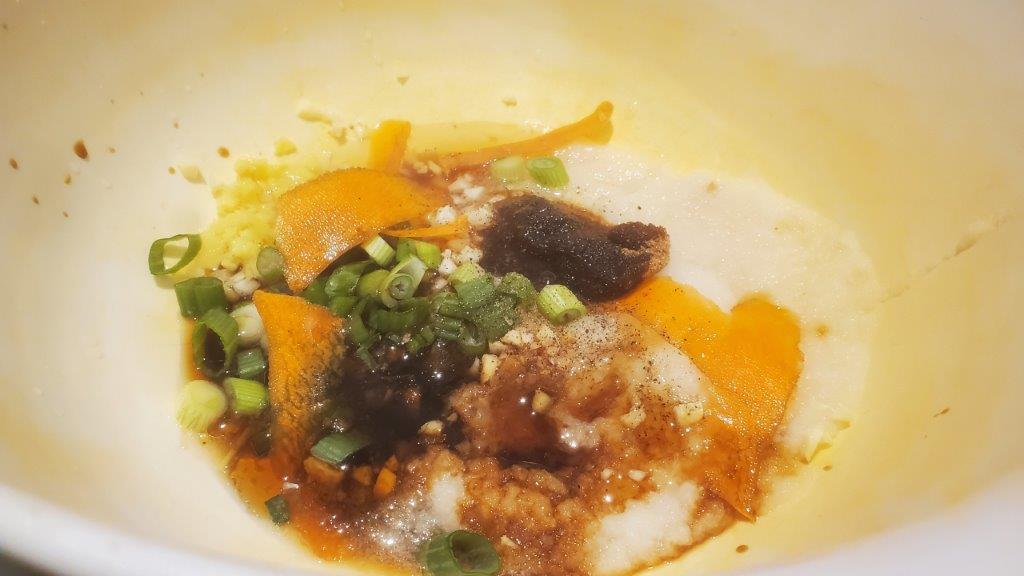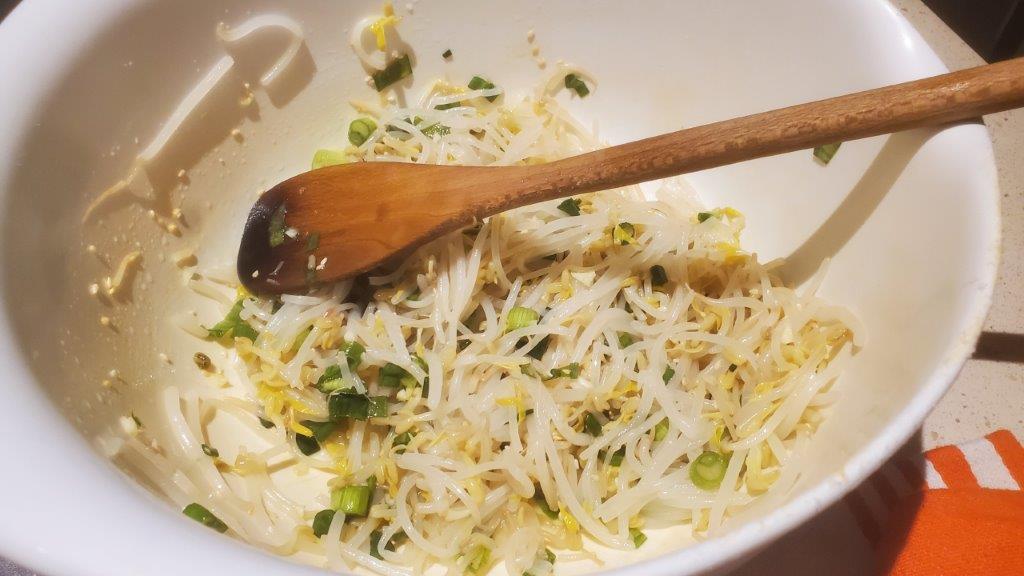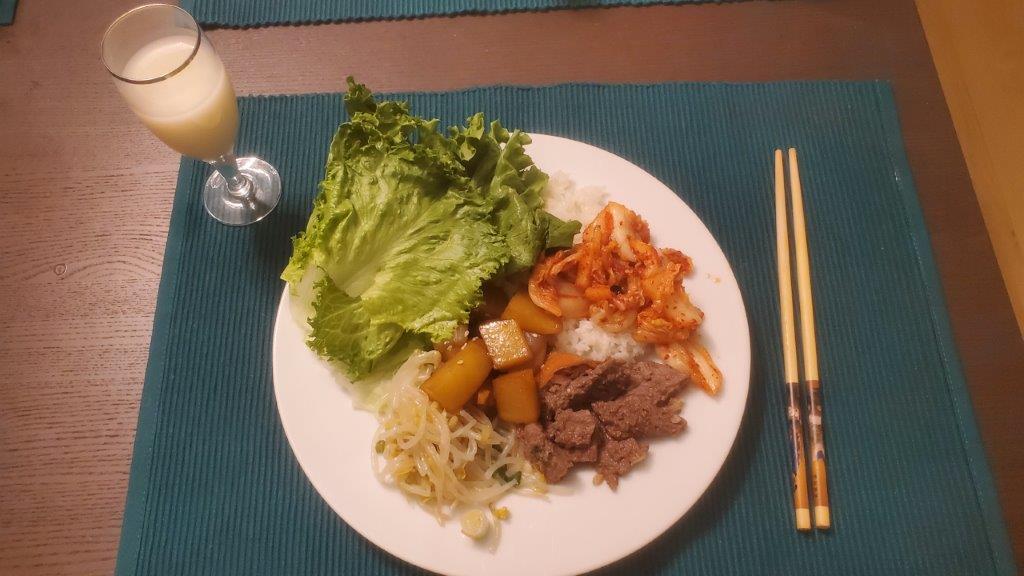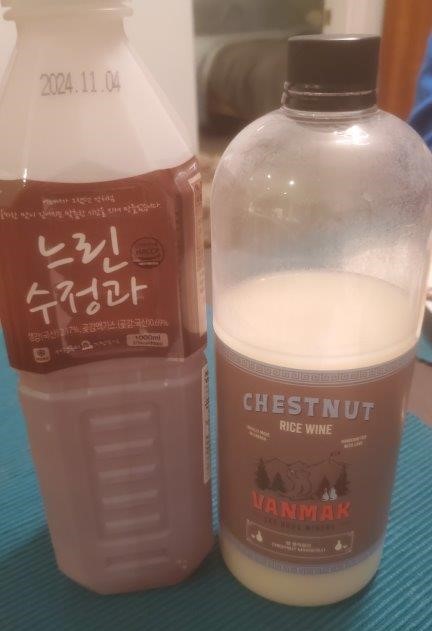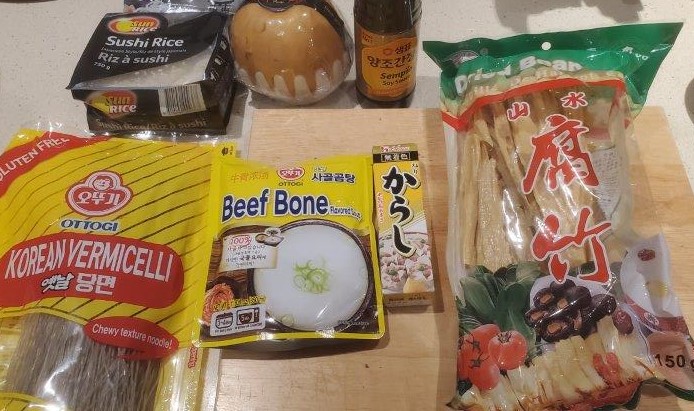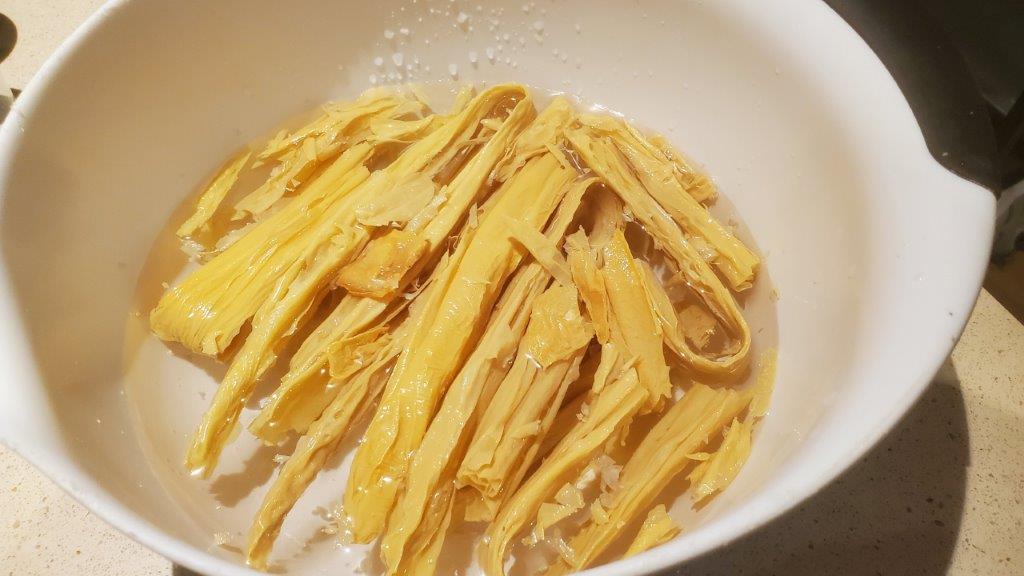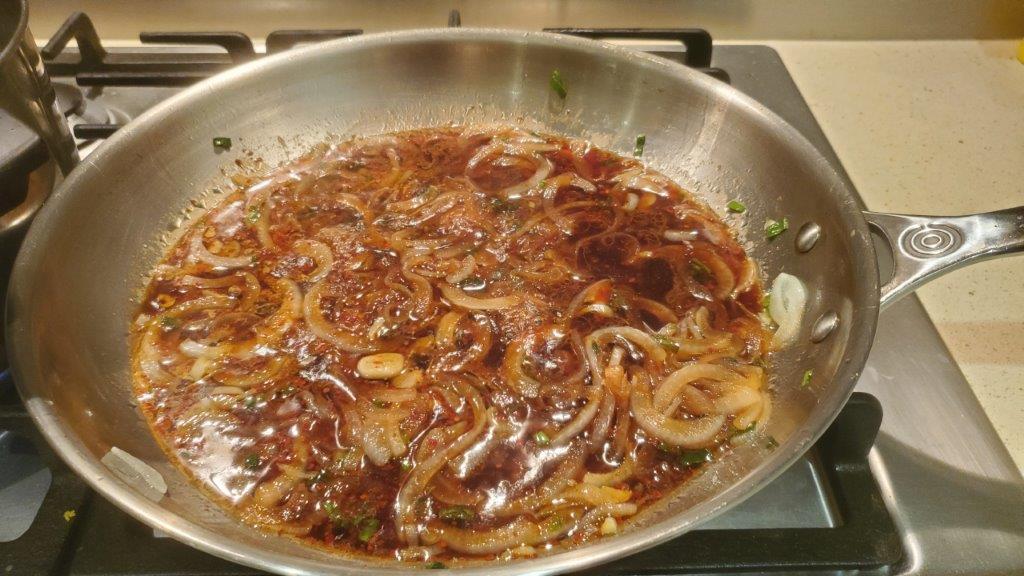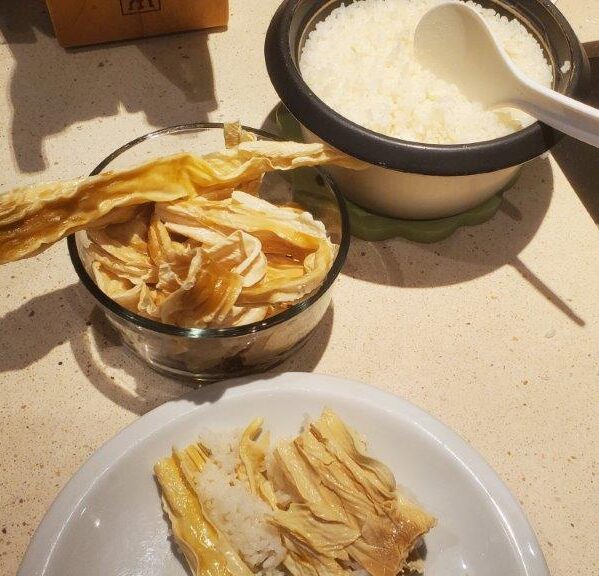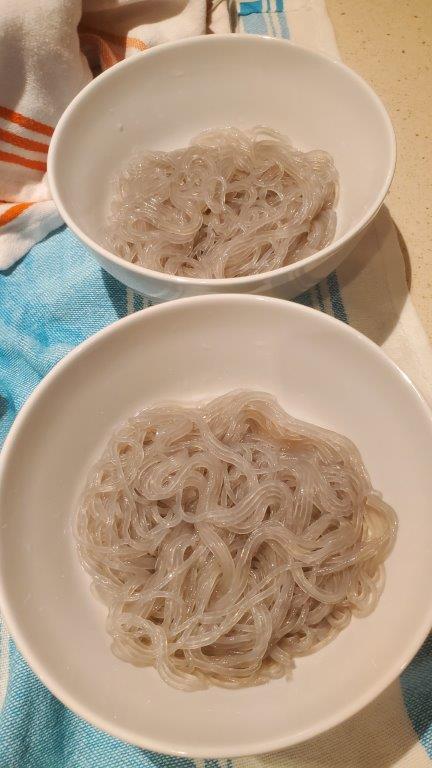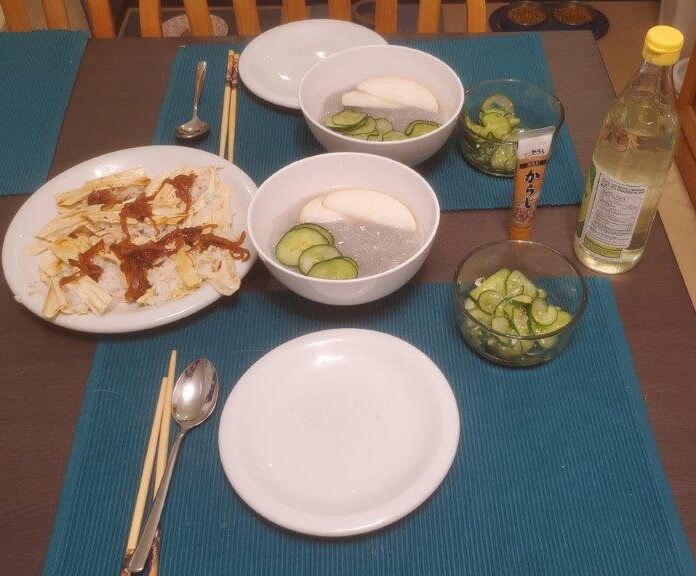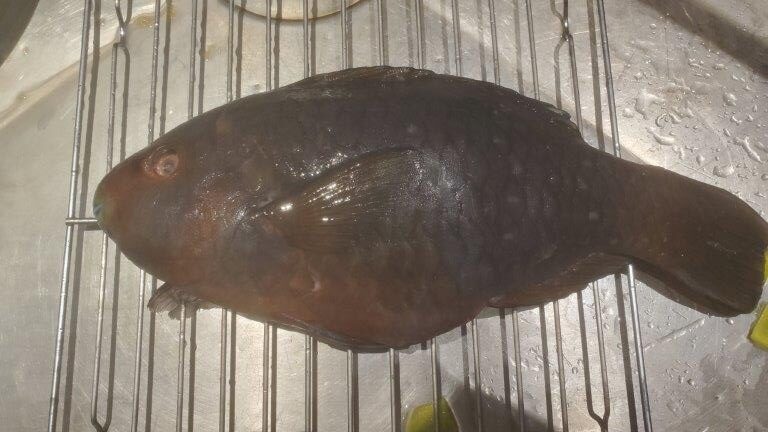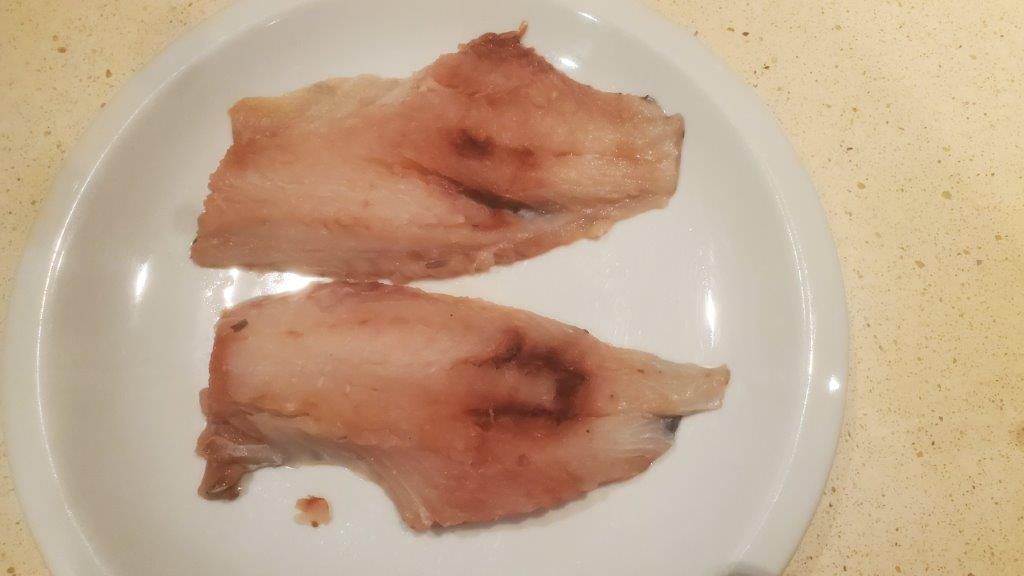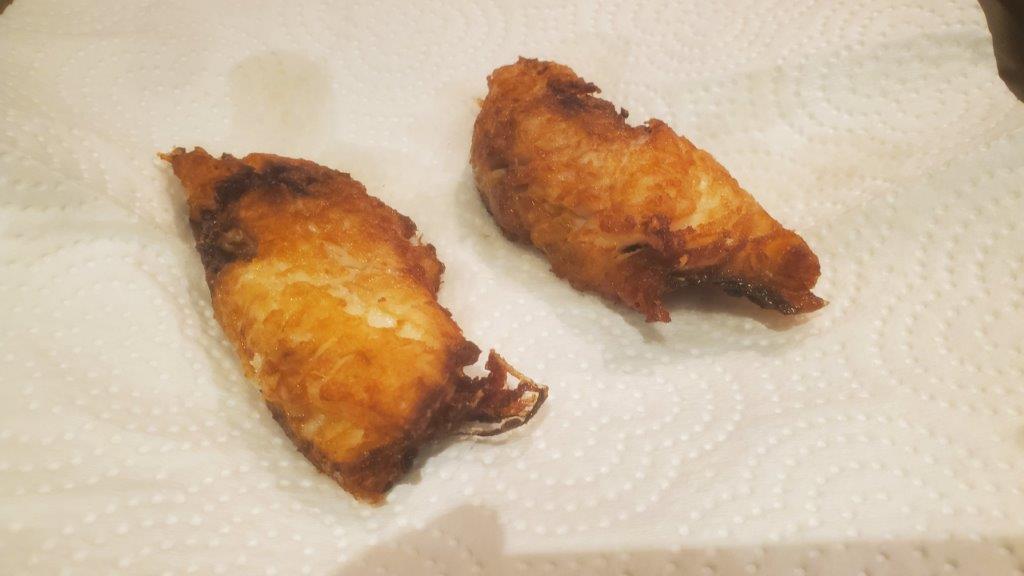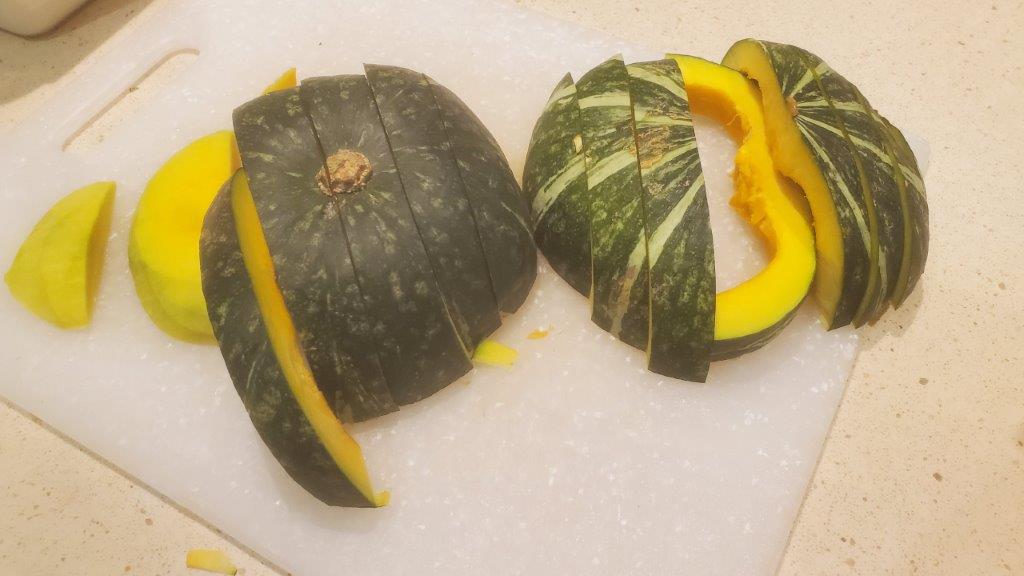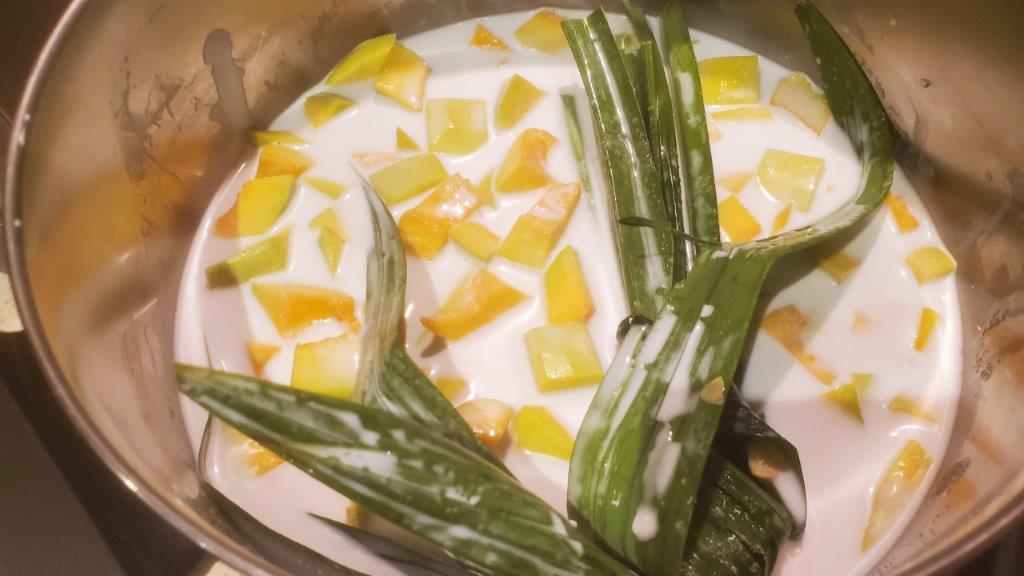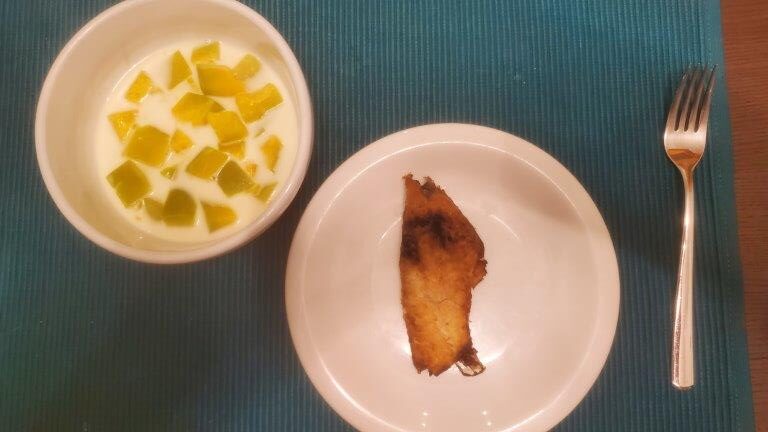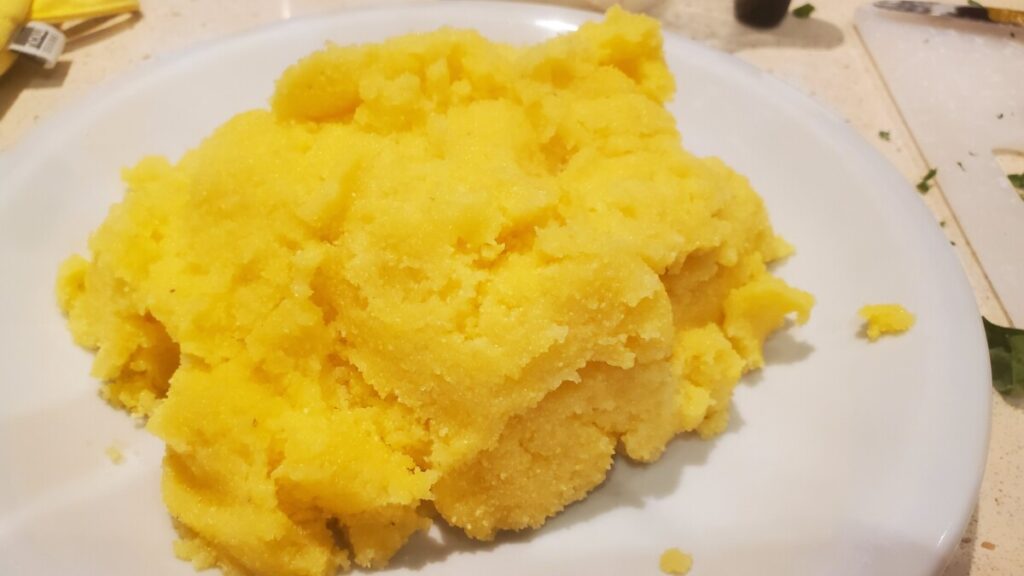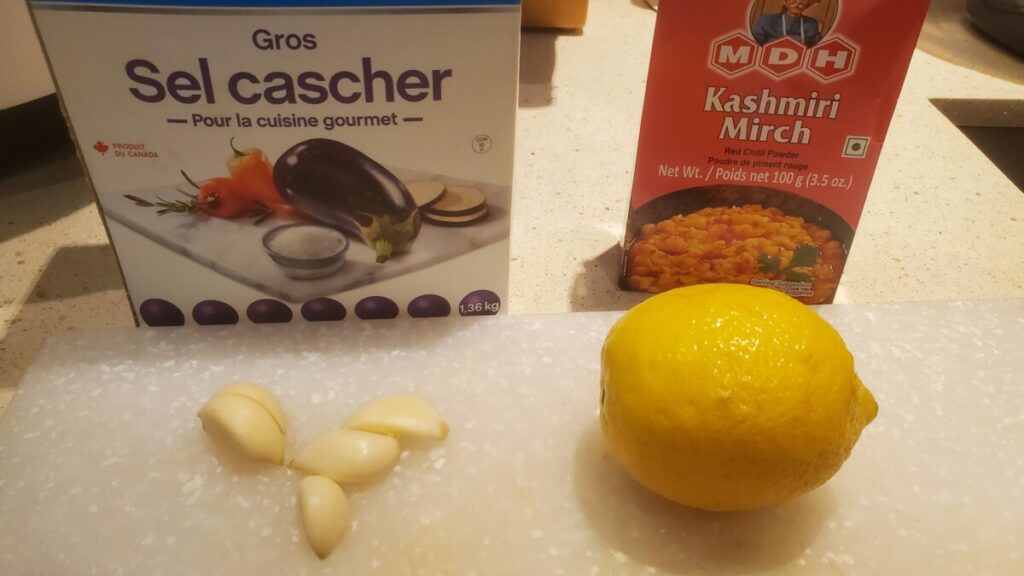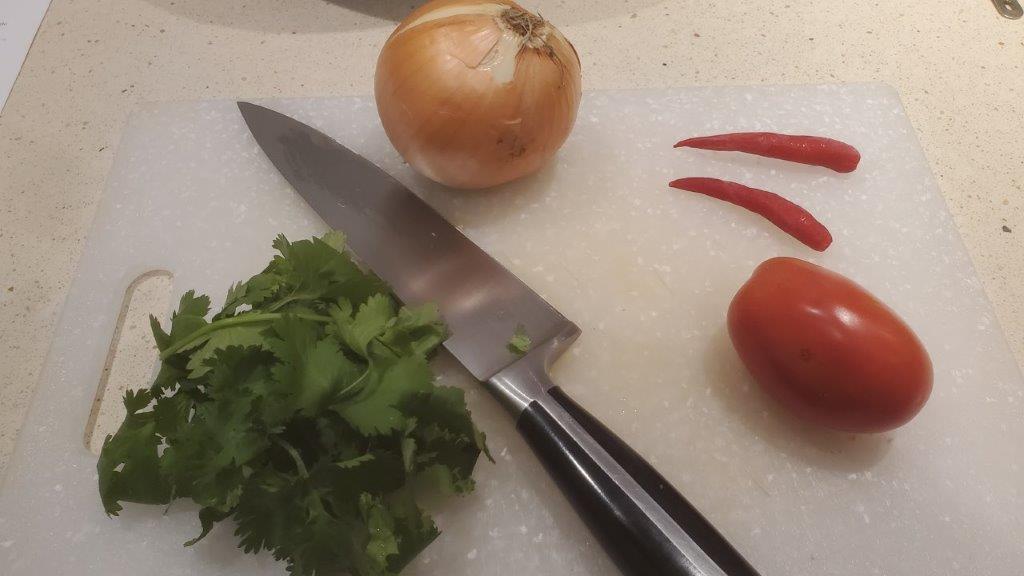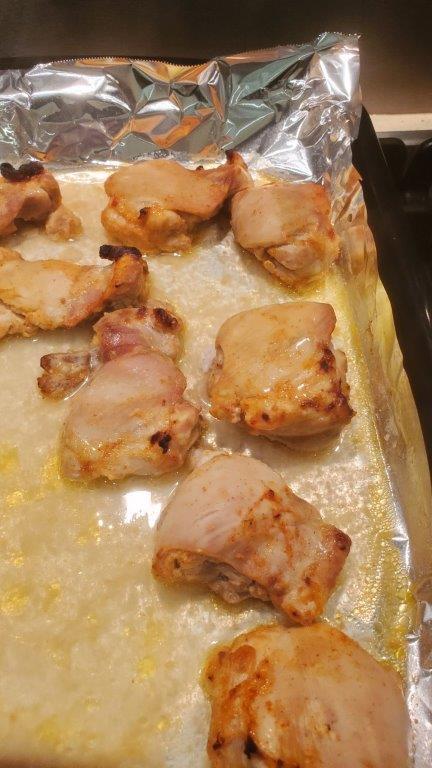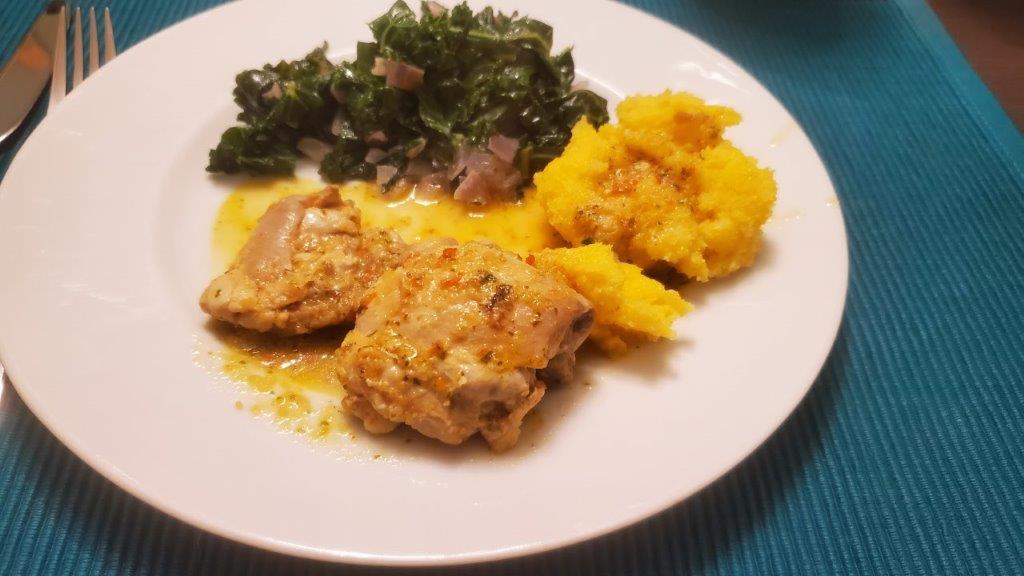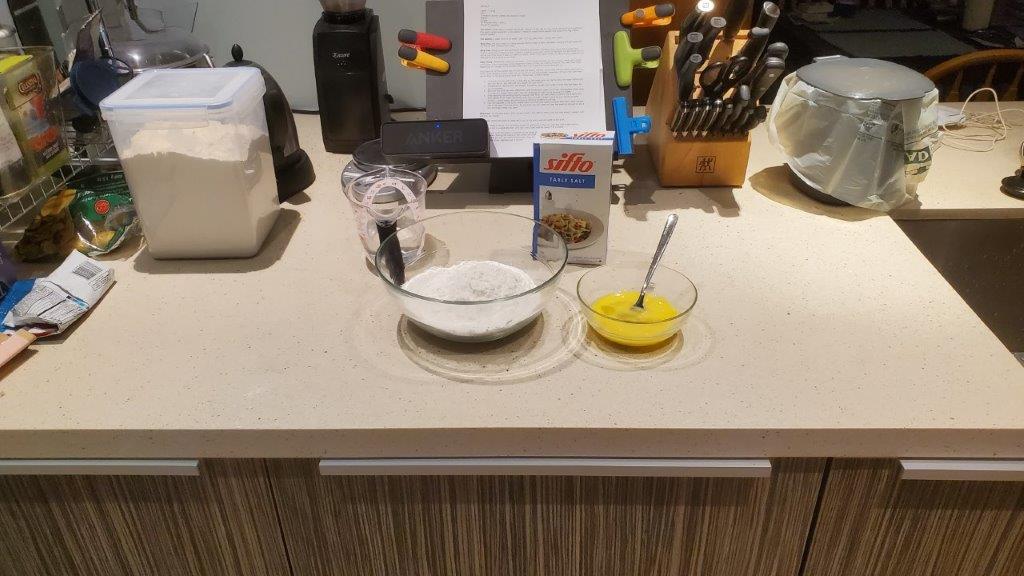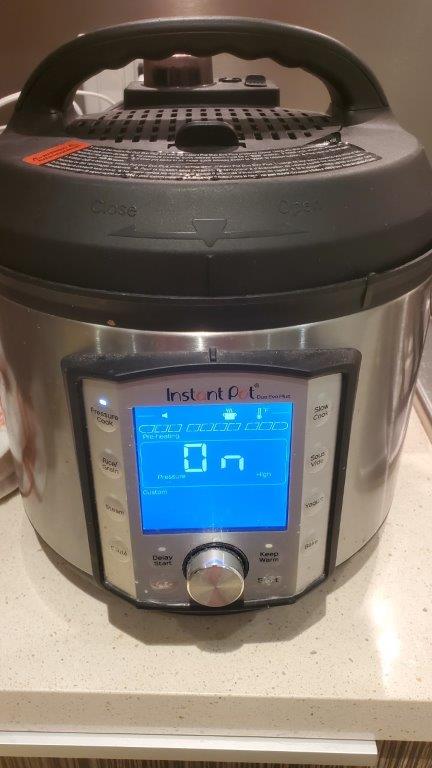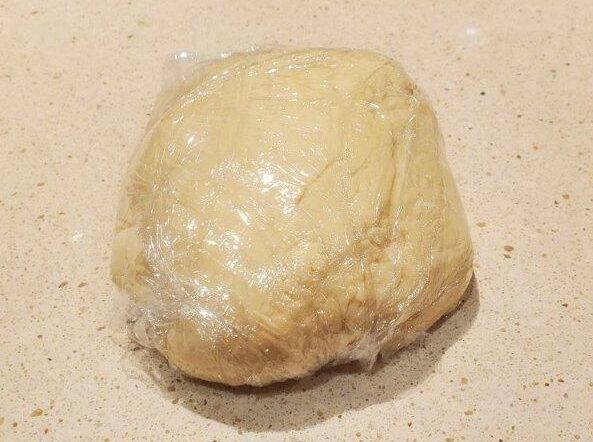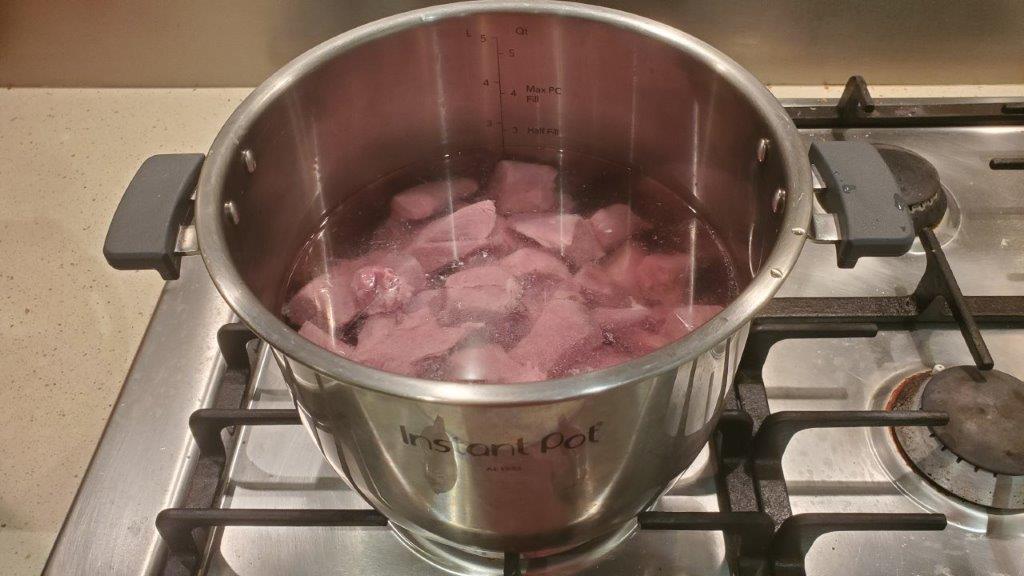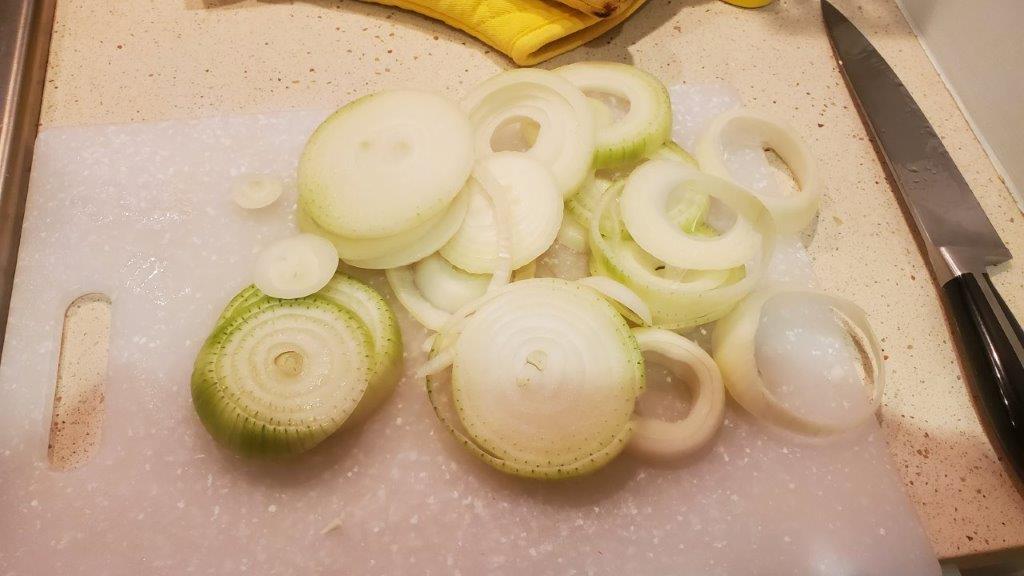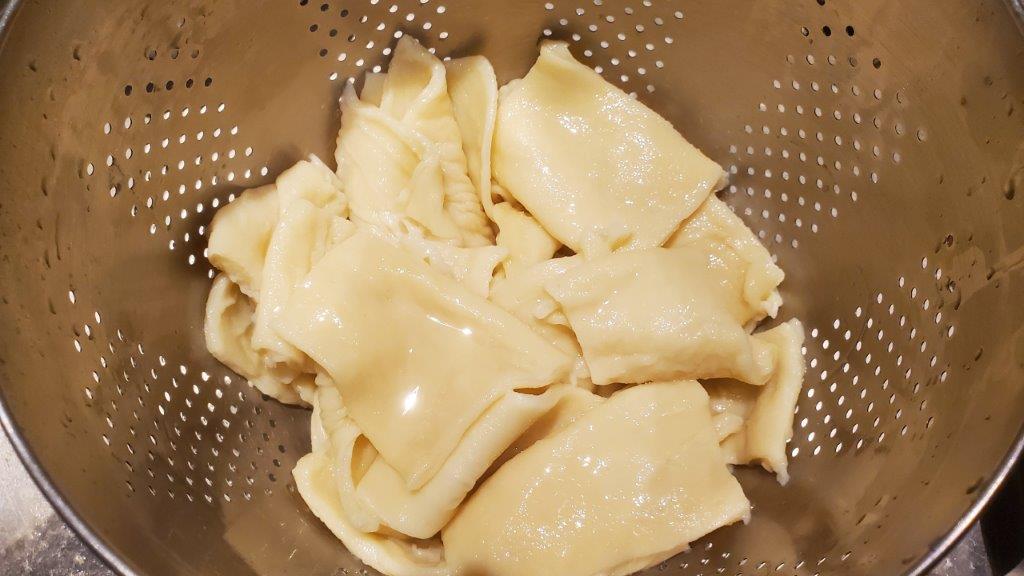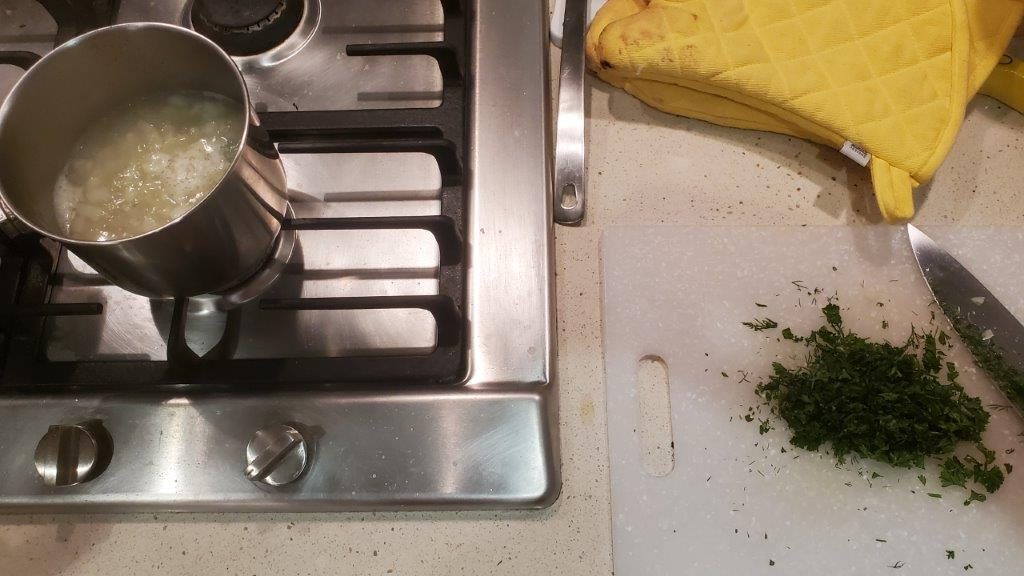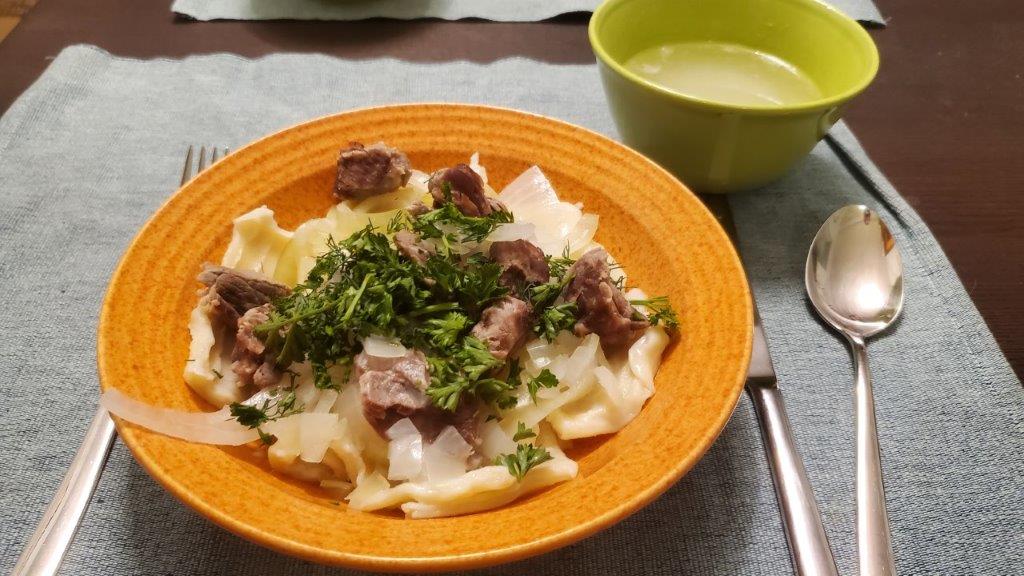We skipped Lativa, for supply chain reasons.
Specifically we needed a bag of something called “grey peas.” While that doesn’t sound terribly appealing, our research assured us that the national dish of Latvia was Pelēkie zirņi ar speķi or “grey peas and bacon.” So grey peas it was.
The only problem is that it turns out that the only Latvian grocery store in Canada was in Toronto. And they would happily ship us a $5 bag of peas for $30. Um.
Fortunately, there was another way. A good friend of ours lives in Toronto, and we would be seeing her in person in just a few weeks, so we asked her to smuggle a bag into Michigan, which we then smuggled back out again.
Our friend is in this picture, but is not the giant beaver:

To be clear, the beaver is our friend too. Its name is Justin.
And now we had a bag of Latvian grey peas. Which were brown. And also labelled in Dutch.
But the internet assures us these are the right kind of peas. Incidentally, the name “Kapucijners” is because the brown color of these grey peas is the same as the brown color of the robes worn by Capuchin monks. Cappucino and Capuchin monkeys are also named for the same monks. None of which are grey.
So let’s make brown grey peas and bacon. All the recipes for this dish are pretty similar, because this is a very simple dish, but we went with one from a Latvian grandma type on YouTube. You can never go wrong with grandma videos.
The process is super easy. You soak the peas overnight. This could almost certainly be accelerated with a pressure cooker, but lacking specific directions for that, and having plenty of time, we just did the soak.
To prepare the dish, you boil the peas for an hour or so. In a separate pan, you cook onion and bacon with some black pepper.
Then you combine the peas with the onions and the bacon and…
…actually, that’s it.
OK, what else shall we make to go with this? How about a chilled soup? That way we can pretend that it’s still summer, and not the start of the cold mud puddle that is a PNW fall.
The soup is also pretty simple. You chop up and combine pickled beets, cucumber, radish, spring onion, parsley, dill, and hard boiled eggs, if you like that sort of thing. We don’t, so no eggs. For liquid, you use kefir, a fermented milk we last encountered while making Icelandic rye bread.
Once you chop up the veg and pour in the kefir, you…
… oh wait, that’s done too.
There’s got to be SOMETHING difficult we could make for this meal. Let’s make bread. Bread is hard. Here’s an “all the ingredients” picture for the bread.
Look at all those ingredients! This must be hard. First, you warm the buttermilk up to body temperature. Then you put everything in a bowl, and let the stand mixer go to town for fifteen minutes. (Interestingly, this bread calls for 100% rye flour, which means it’s not going to rise all that much no matter WHAT we do to it.)
After pausing a few hours for the dough to not rise, you split it off to loaf pans, and try to ignore the fact that this dough feels more like the Play- than the bread variety. This would also have been an excelleint time to forcibly shape the bread a little better.
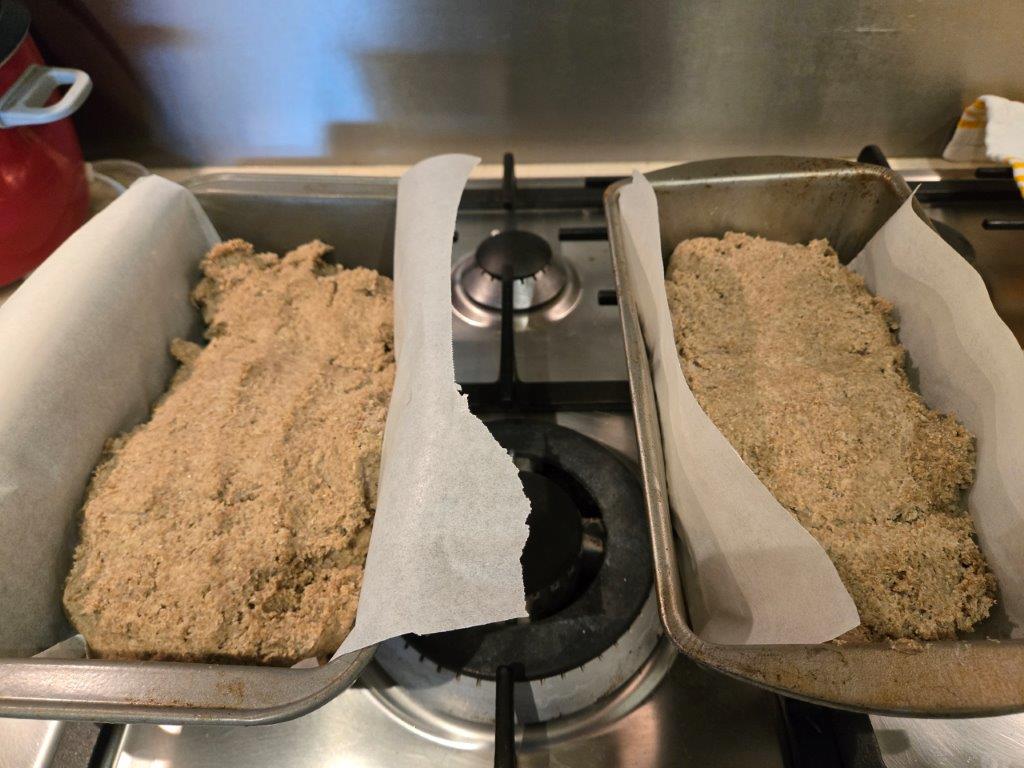
Once in the pans, we let it not rise for an additional half hour and then baked. What we got out of the oven was… not the most attractive loaves of bread we had ever made.
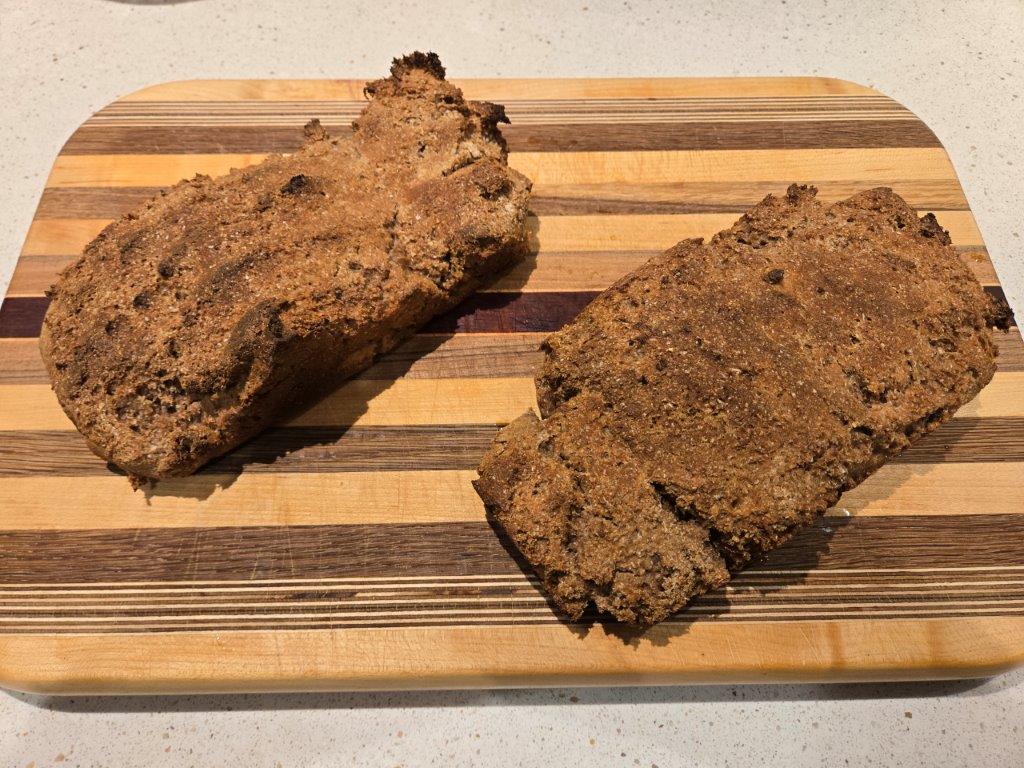
It’s a nice cutting board, though, innit? Gift from a friend.
Now, I’m being awfully dismissive of this bread, but you know what? It honestly turned out pretty tasty. The apple juice and buttermilk gave it a nice tangy kick, and while it was dense, it wasn’t tough.
So here’s our final spread – soup, peas, bread, and a can of sprats. For our Estonian meal, we put Latvian sprats on a comnmercial loaf Estonian bread. This time we put Latvian sprats on a loaf of bread we made ourselves.
In terms of cooking process, definitely one of the simpler meals we’ve made, but the results were excellent. The beet soup was the standout – tart from the beets, creamy from the keffir, and redolent with dill.
I believe that’s the first time I’ve used the word “redolent” on this blog. Sorry. I’ll try not to let it happen again.
But the national dish – grey peas and bacon? Obviously comfort food. The salty bacon and peas together made for a hearty and satisfying dish. And like I said, the bread was completely acceptable, despite looking… well, like that.
We weren’t able to locate a bottle of balsam liqueur, which would have been the most appropriate drink, so instead we picked up a can of this not-at-all-Latvian beer:
A tasty meal, and we’ll be back in this neighborhood again in four countries or so. But next up, Lesotho!
Recipes:
Grey Peas and Bacon
Chilled Beet Soup
Latvian Rye Bread

